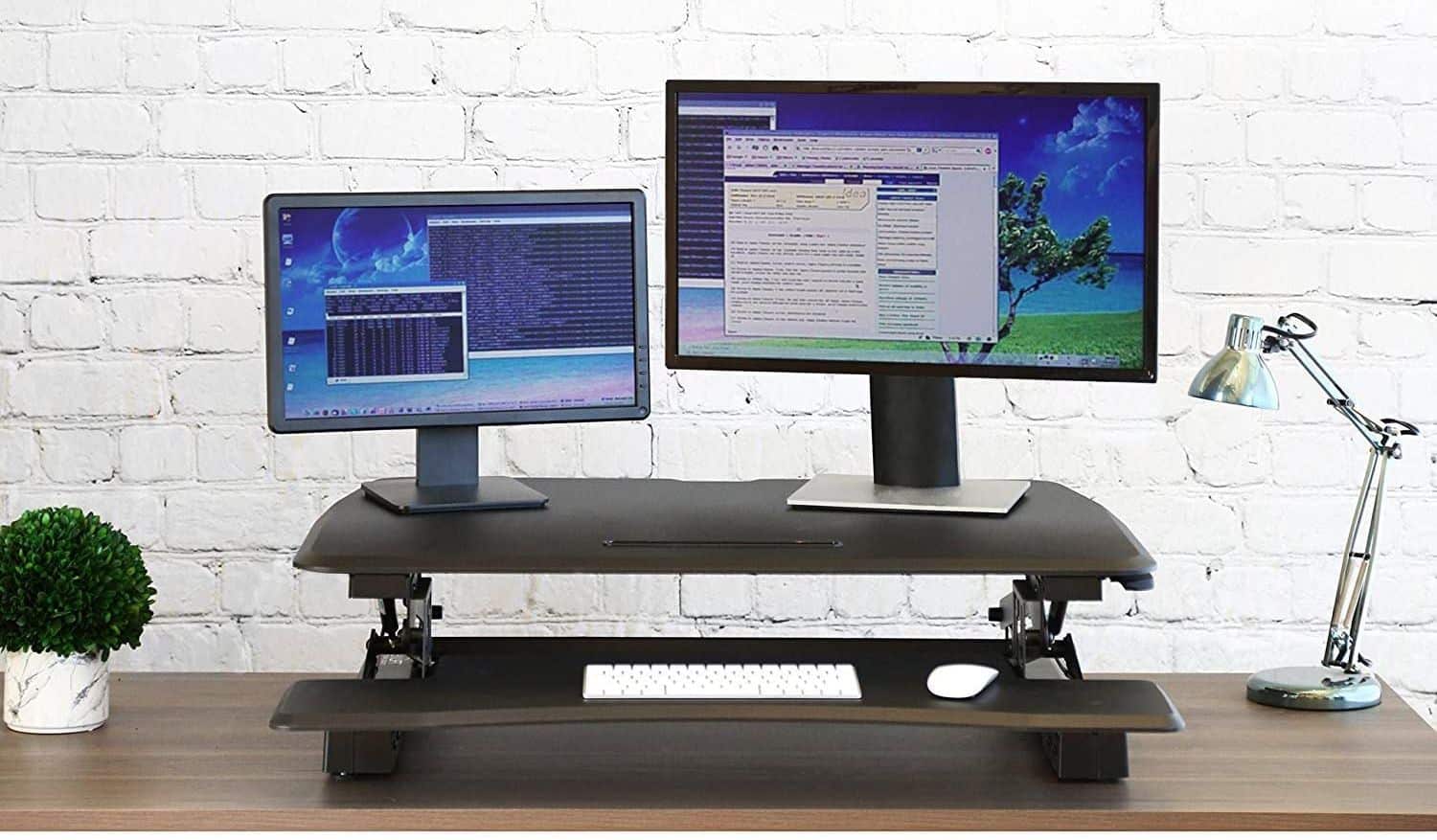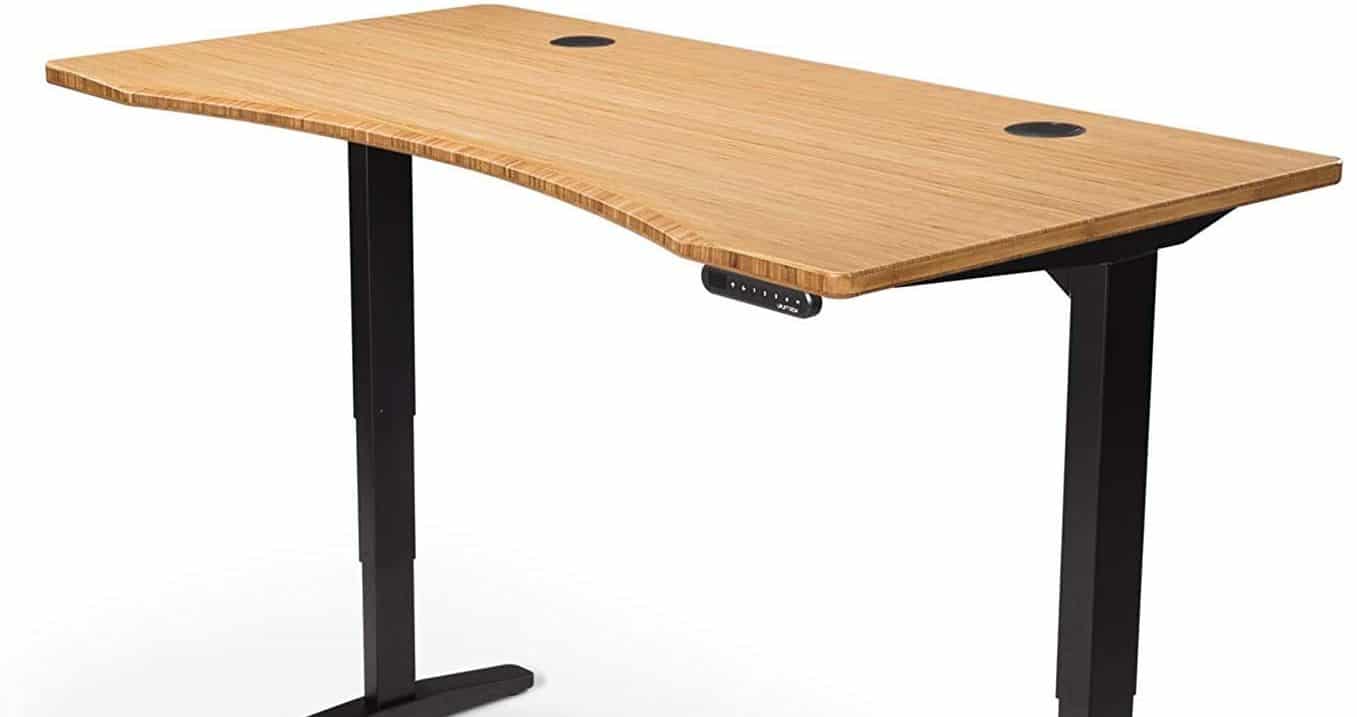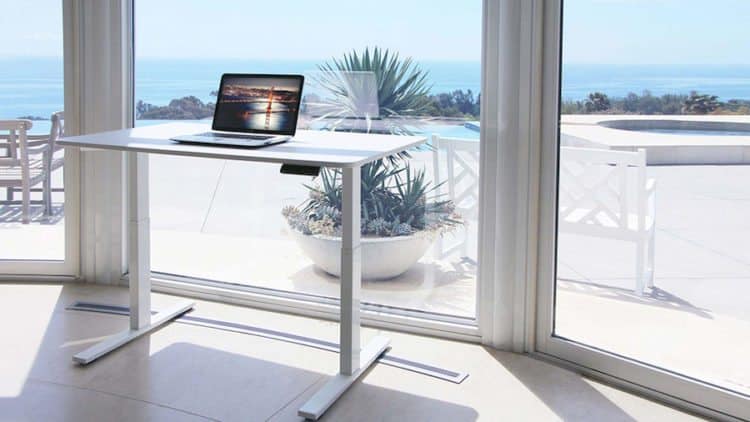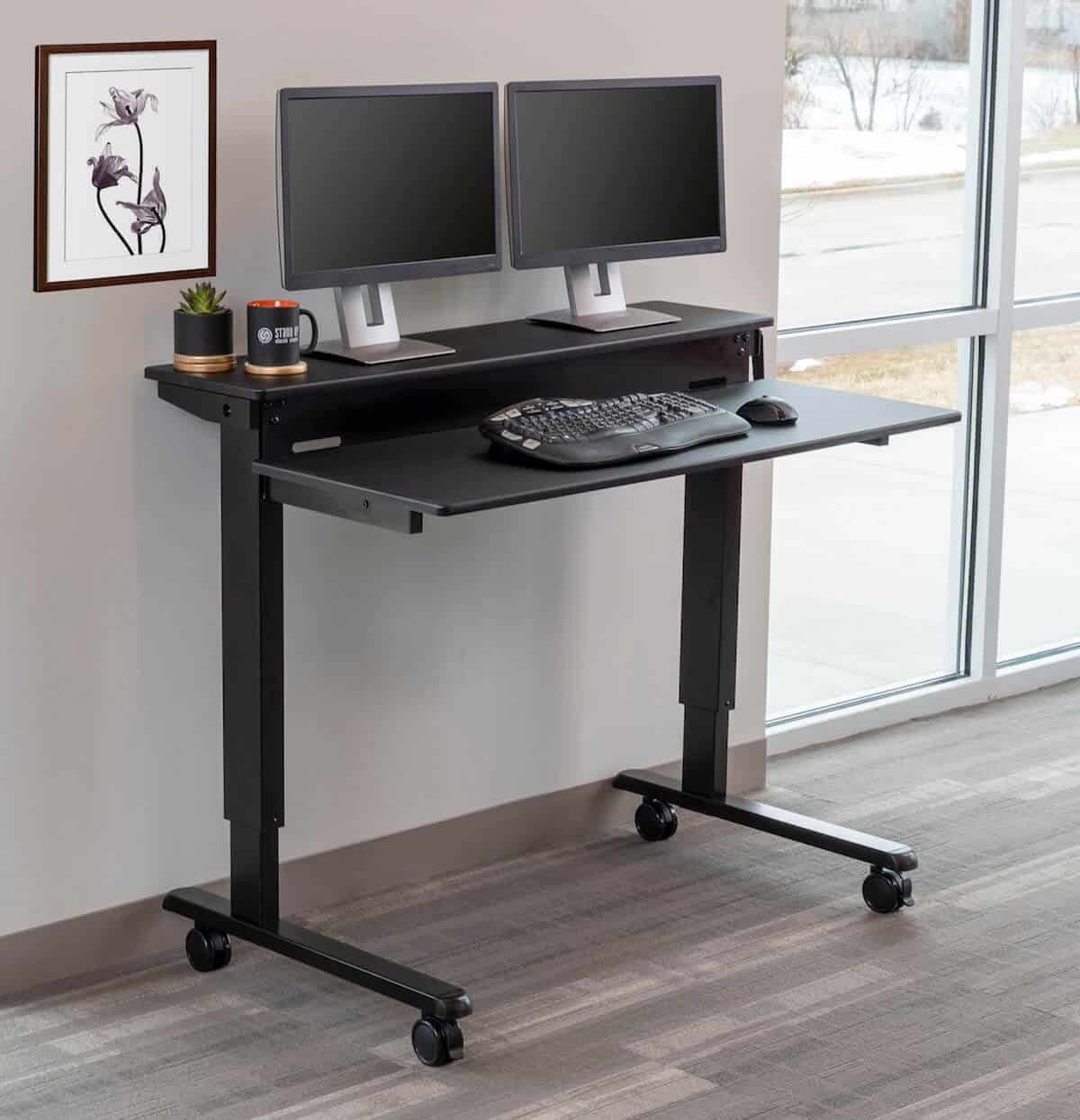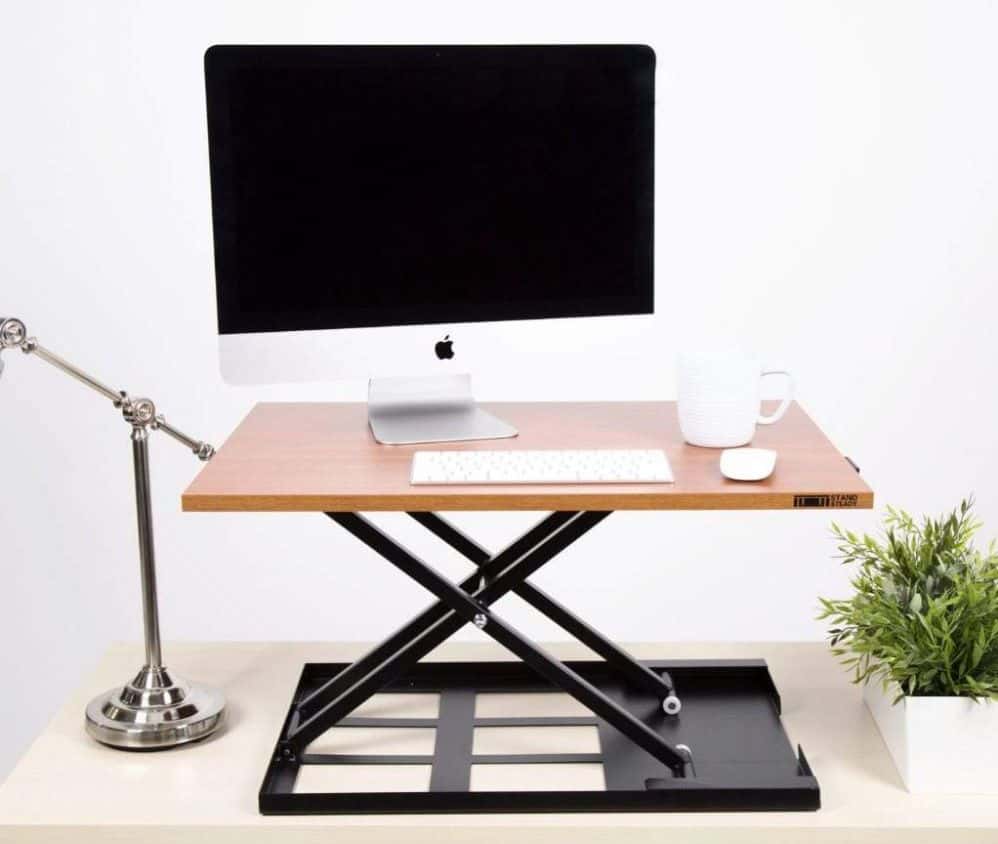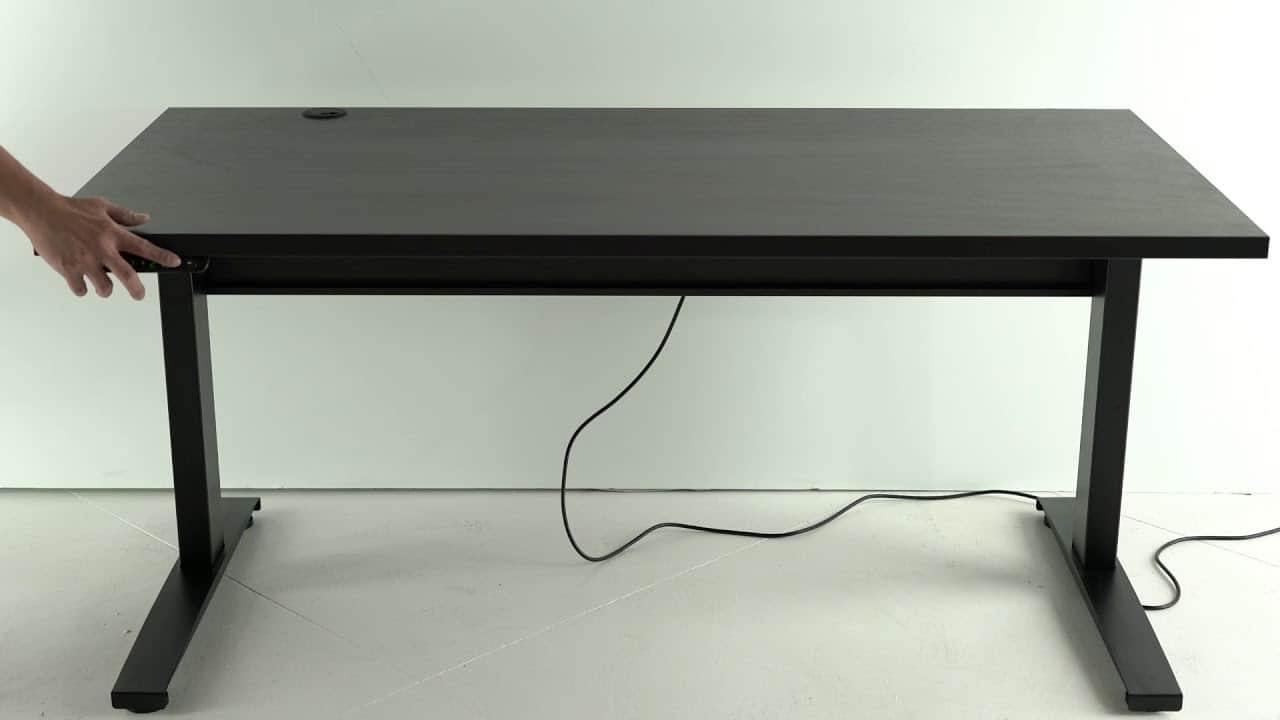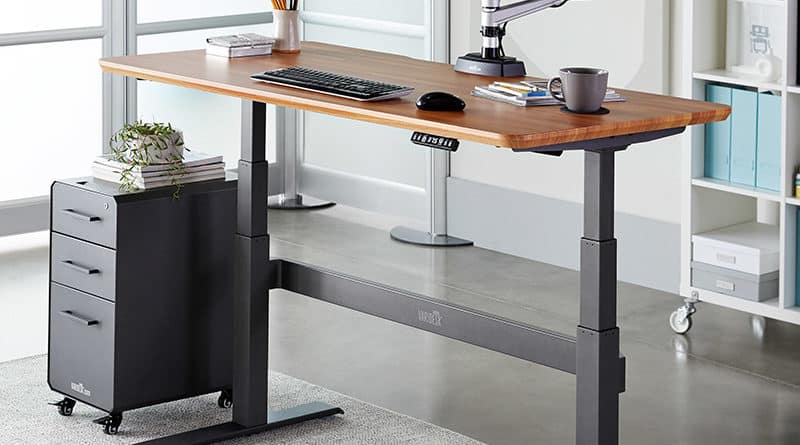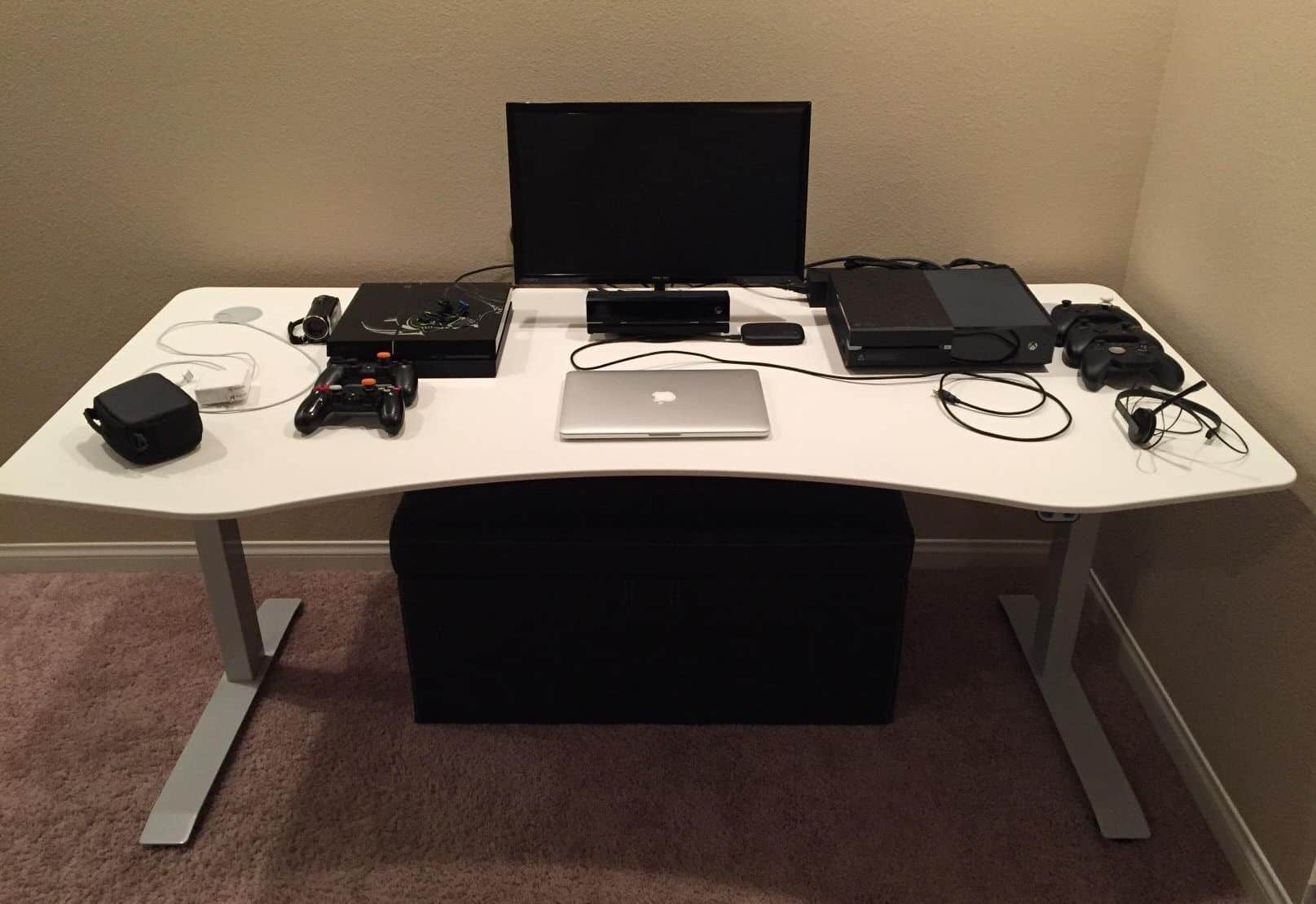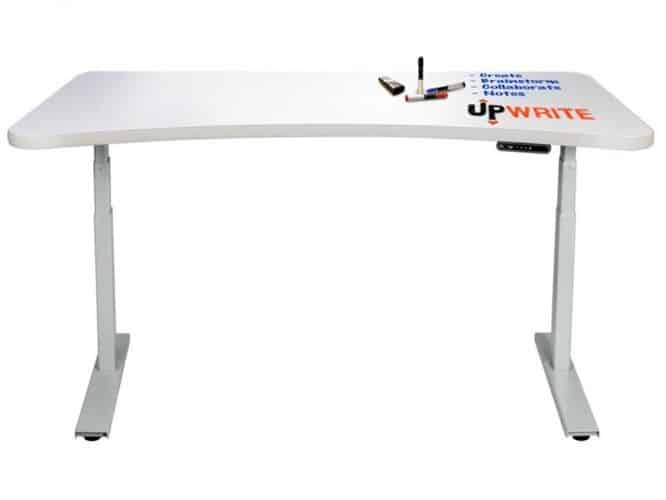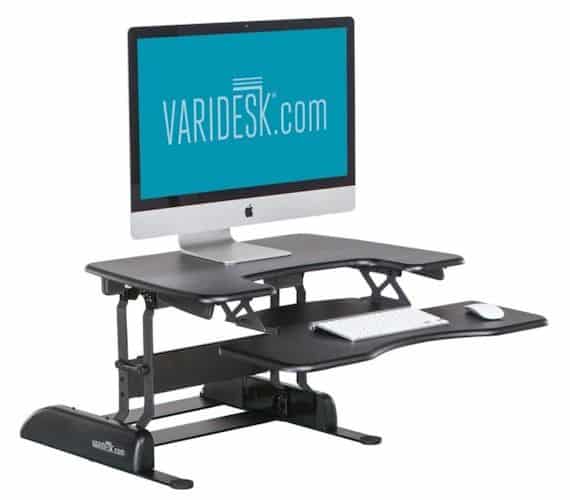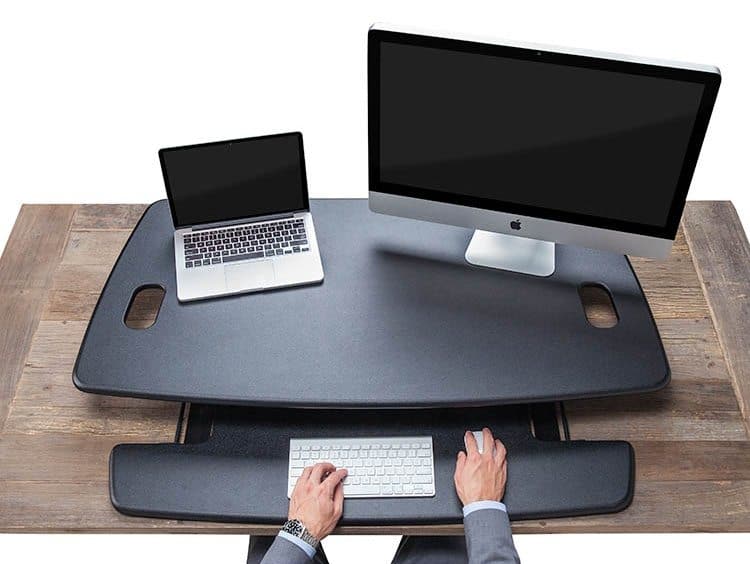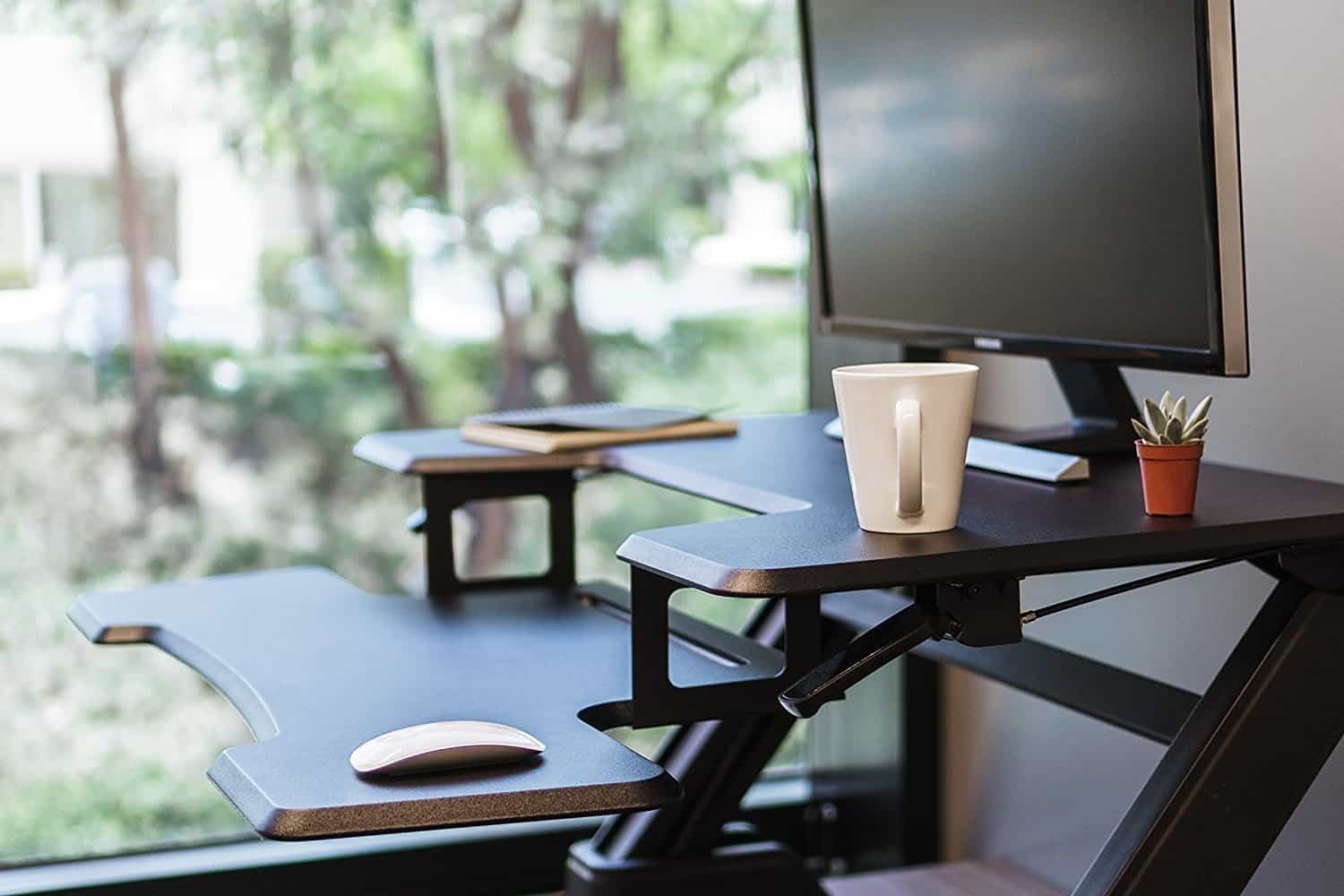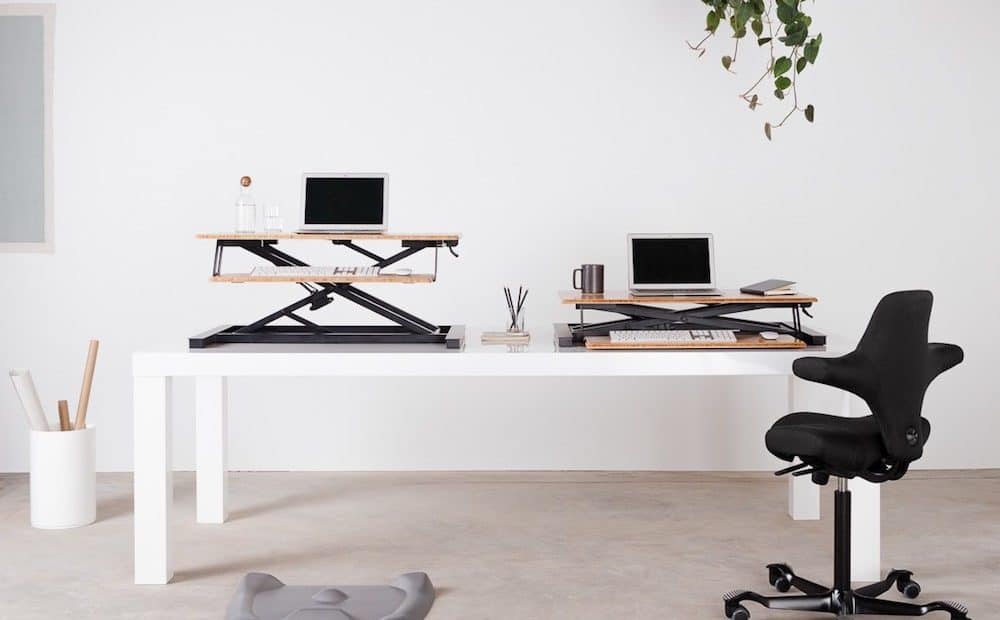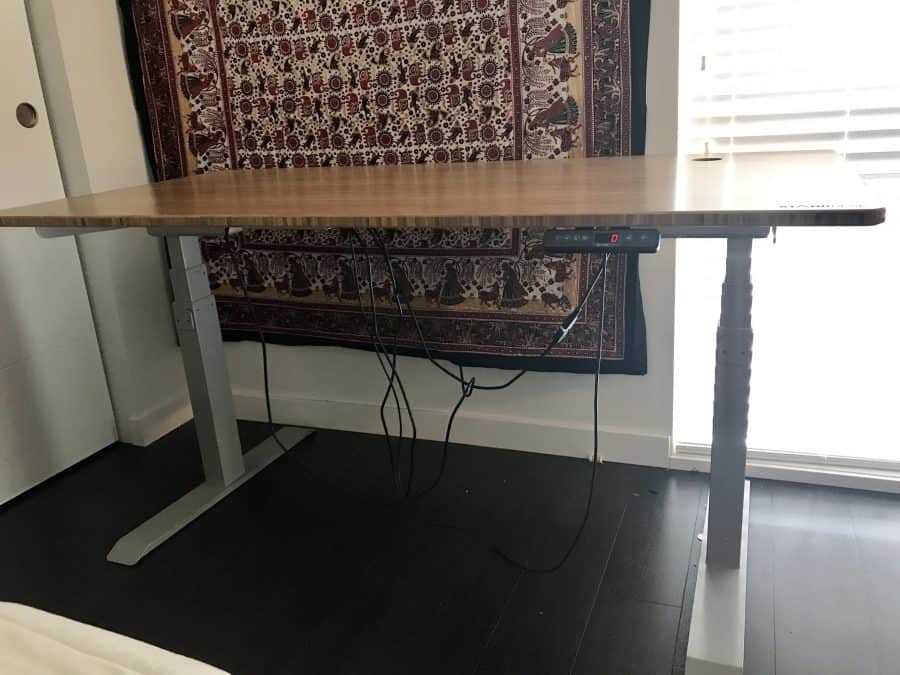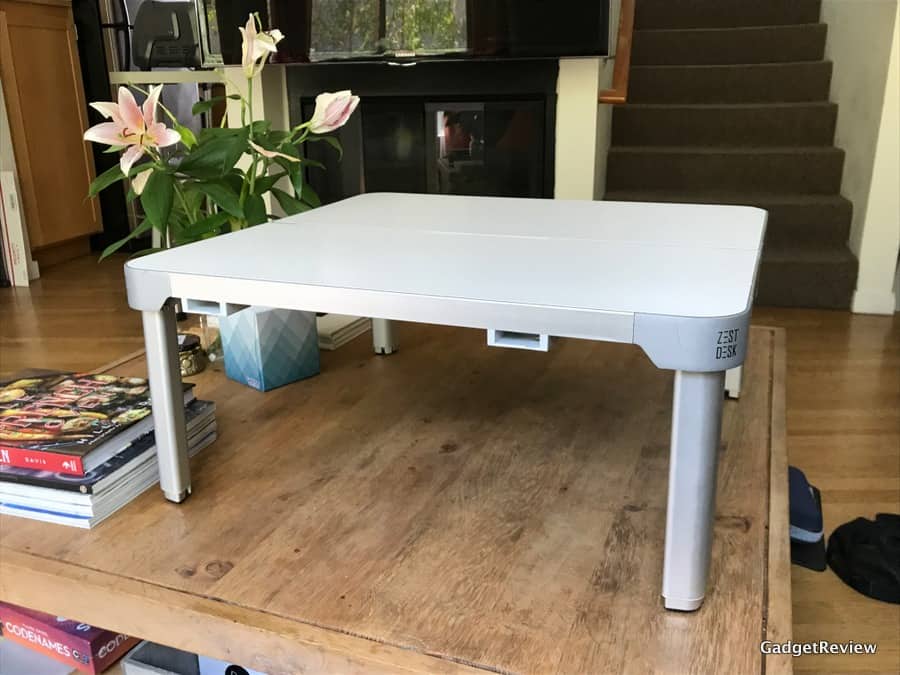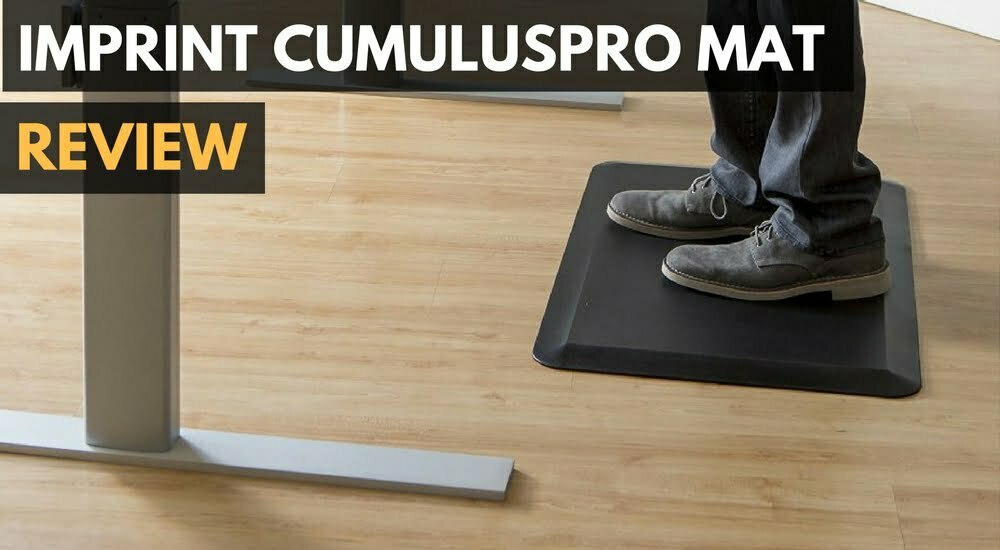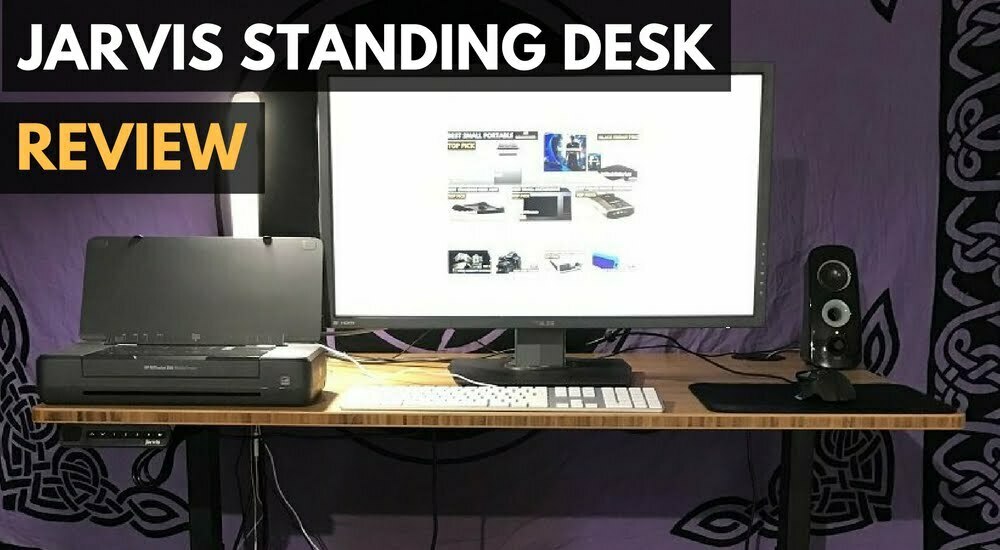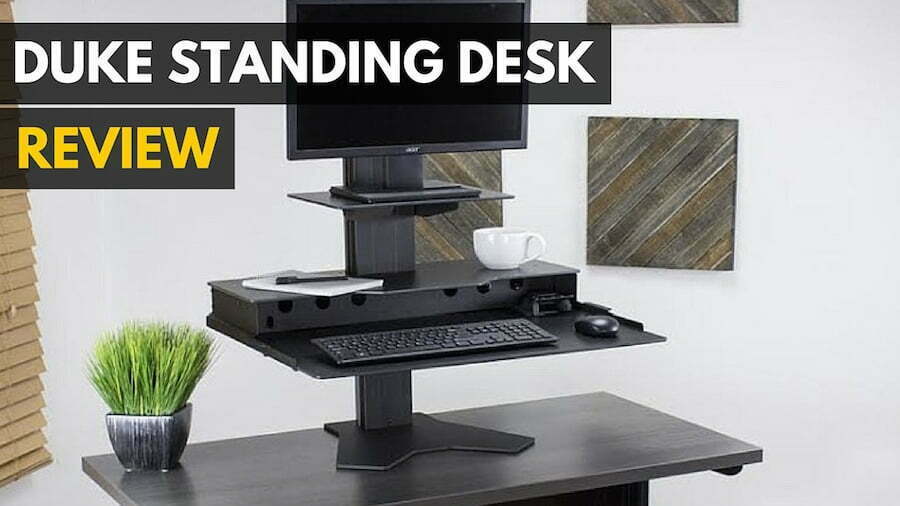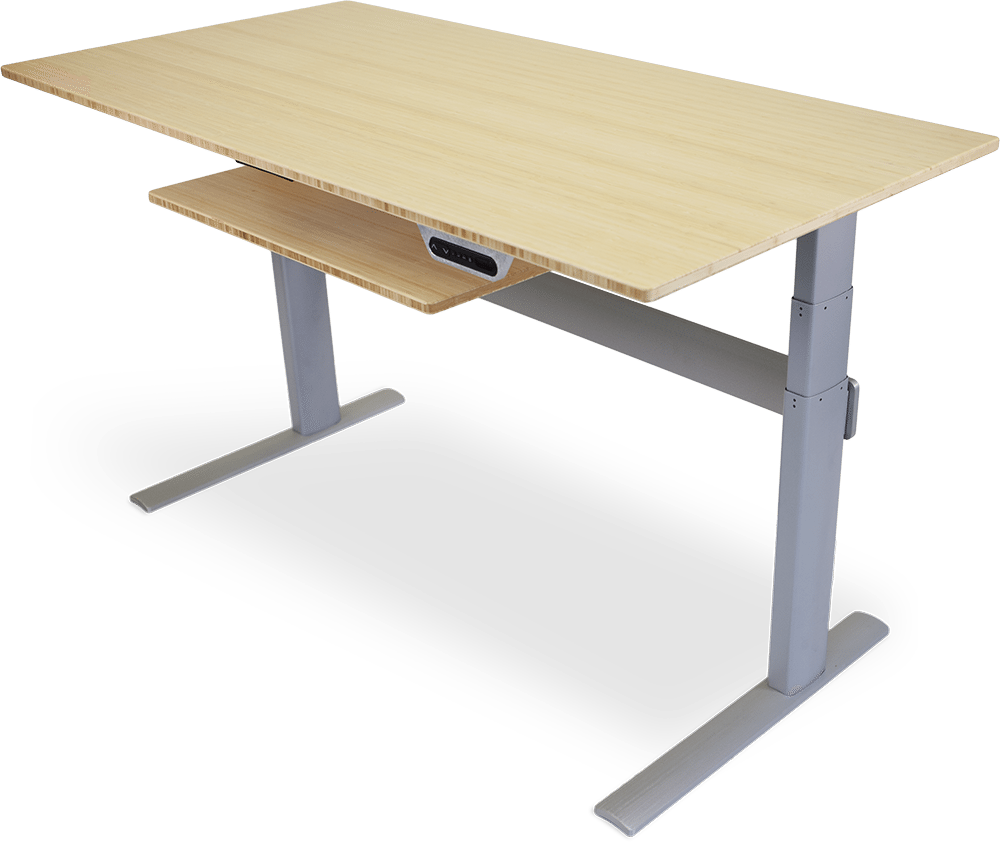Standing setups are trending among those with desk jobs, and the best standing desks have been shown to increase productivity. But, as standing desks tend to have a smaller surface area, it can be hard to keep them free of clutter. So, here are some ways on how to organize a standing desk so you can reap the productive benefits of your new workspace.
KEY TAKEAWAYS:
- The goal of organizing a standing desk is to maximize productivity by minimizing clutter.
- There are three methods–cables, desk surface, and floor area–to consider when organizing a standing desk.
- Reducing and managing chords should be priority number one when it comes to desk organization.
Methods to Organize Your Standing Desk
As with any project, it’s best to break down each area, identify any unique problems and then figure out which solution suits you best. There are three sections to consider for a standing desk and various ways within each section to make sure they work for, and not against, your productivity.
Insider Tip
If you choose to use a cable sleeve, don’t forget to leave enough width for the chords to move along with the desk as you adjust its height.
Method 1 – Cable Management
- The key to a productive workspace is reducing clutter.
- Tangles of power chords are notorious for distracting those with desk jobs, but it’s a problem that you can easily avoid.
- The first step to organizing your standing desk is getting rid of any needless and unused chords. From there, decide the cable layout that best fits your setup.
- For standing desks, make sure you have enough room for chords to reach outlets, and consider what gadgets might be better off wireless or removed altogether.
- Options are plentiful when to comes to chord management, including a cable tray, a sleeve, ties, or more.
- Be sure that you leave enough room for the cables to reach the power strip from the highest point of adjustment.
Method 2 – Increase Your Desk Surface Area
- Installing a monitor arm can be especially helpful for those who need two monitors for their work.
- The monitor’s arms keep the screen lifted off the desk, leaving you with much more space for other items.
- If you plan to assemble your desk, here are some tips on how to set up a standing desk.
- Instead of leaving all your items in piles and stacks, use a desk organizer or drawer dividers. This both removes clutter and reduces time spent searching for lost and misplaced items.
- Another good way to keep your desk surface free from obstruction is to put floating shelves above your desk. This is especially useful for those with limited surface area.
- If you like building furniture, you might even want to consider checking out how to make a standing wall desk.
Method 3 – Know How to Use Your Floor
- While standing desks offer many health benefits, staying upright for too long can overstress the knees, back, and feet. That’s why, when you are organizing your standing desk setup, it’s good to keep in mind that your floor area should have enough space to incorporate an anti-fatigue floor mat.
- Unless you live on a planet where the sun never sets, a good lamp is a vital piece for any productive workspace.
- Often, sturdy desk lamps have large bases that crowd the desk surface, taking up room for other essential items. For this reason, a floor lamp can be a great companion for any office desk space.
Warning
Wire trays placed in the wrong position can make it difficult and time-consuming to unplug and connect new wires. When installing, make sure to position in a place that’s both out of the way and easily accessible.
F.A.Q.S
What does wire management mean for standing desks?
Wire management means trimming back the number of wires at your desk and then using any method(s) possible to keep all essential wires tightly bound and out of your way.
Are standing desks worth it?
Standing desks, while pricy, are proven to increase productivity and decrease the health risks of a sedentary lifestyle.
How do you maintain good posture when using a standing desk?
Maintaining proper posture is necessary when using a standing desk and can help reduce the risk of heart disease. Users should stand upright without slouching the shoulders, as this is the best posture for blood circulation. It also is recommended that people use desk stretches and take a break from standing every one or two hours.
STAT: Spending less time sitting and more standing is shown to lower cholesterol, weight–which translates to a lower risk of heart disease. (source)
REFERENCES:
- https://www.standupdeskstore.com/standing-news/10-desk-organization-ideas-to-boost-productivity
- https://www.progressivedesk.com/blogs/wellbeing-productivity/lighting-for-your-standing-desk
- https://updesk.com/blogs/news/organize-your-standing-deskr
- https://www.youtube.com/watch?v=s92ePe_VXcg
- https://www.youtube.com/watch?v=rwxT9erFq3o

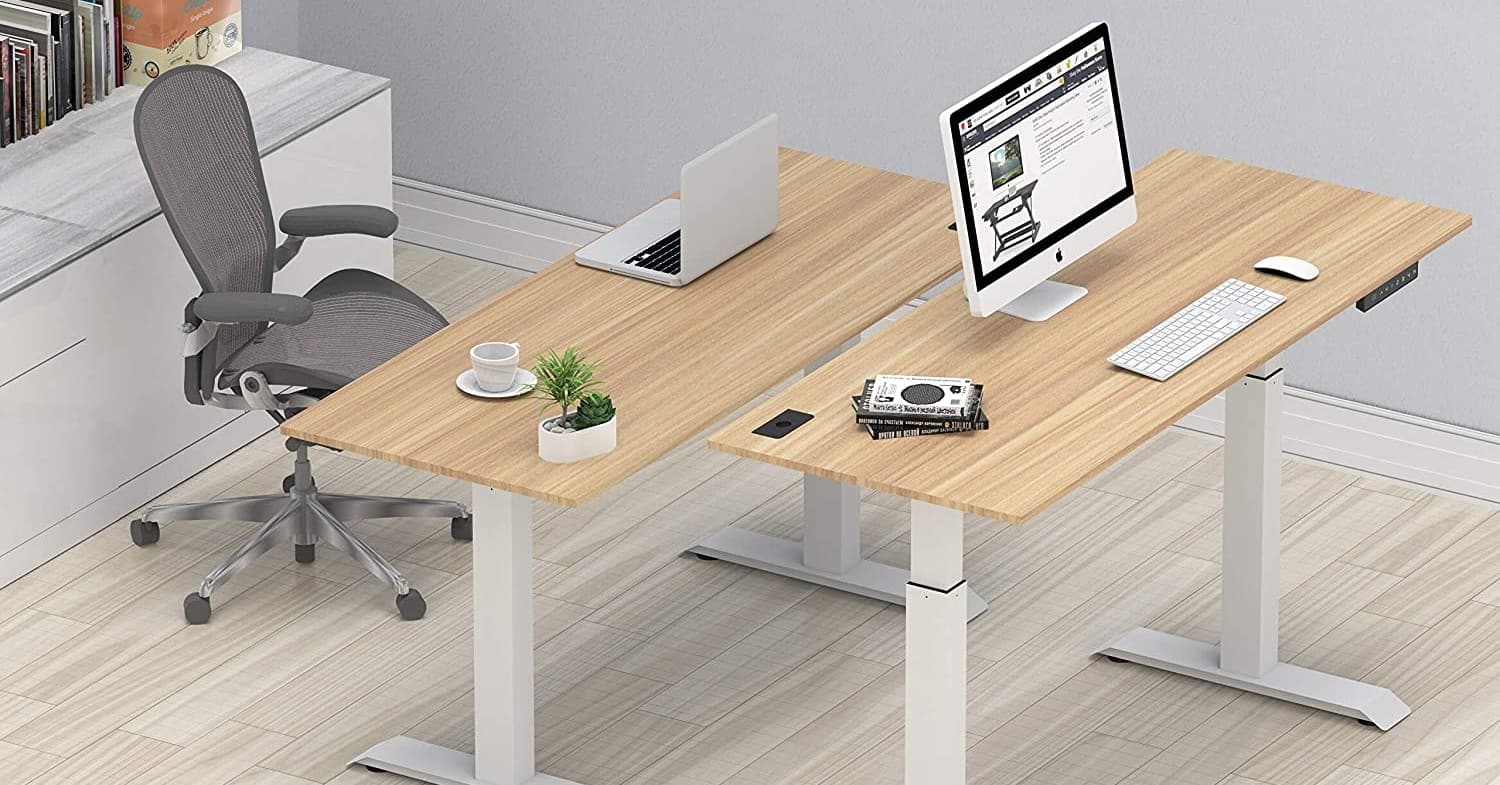













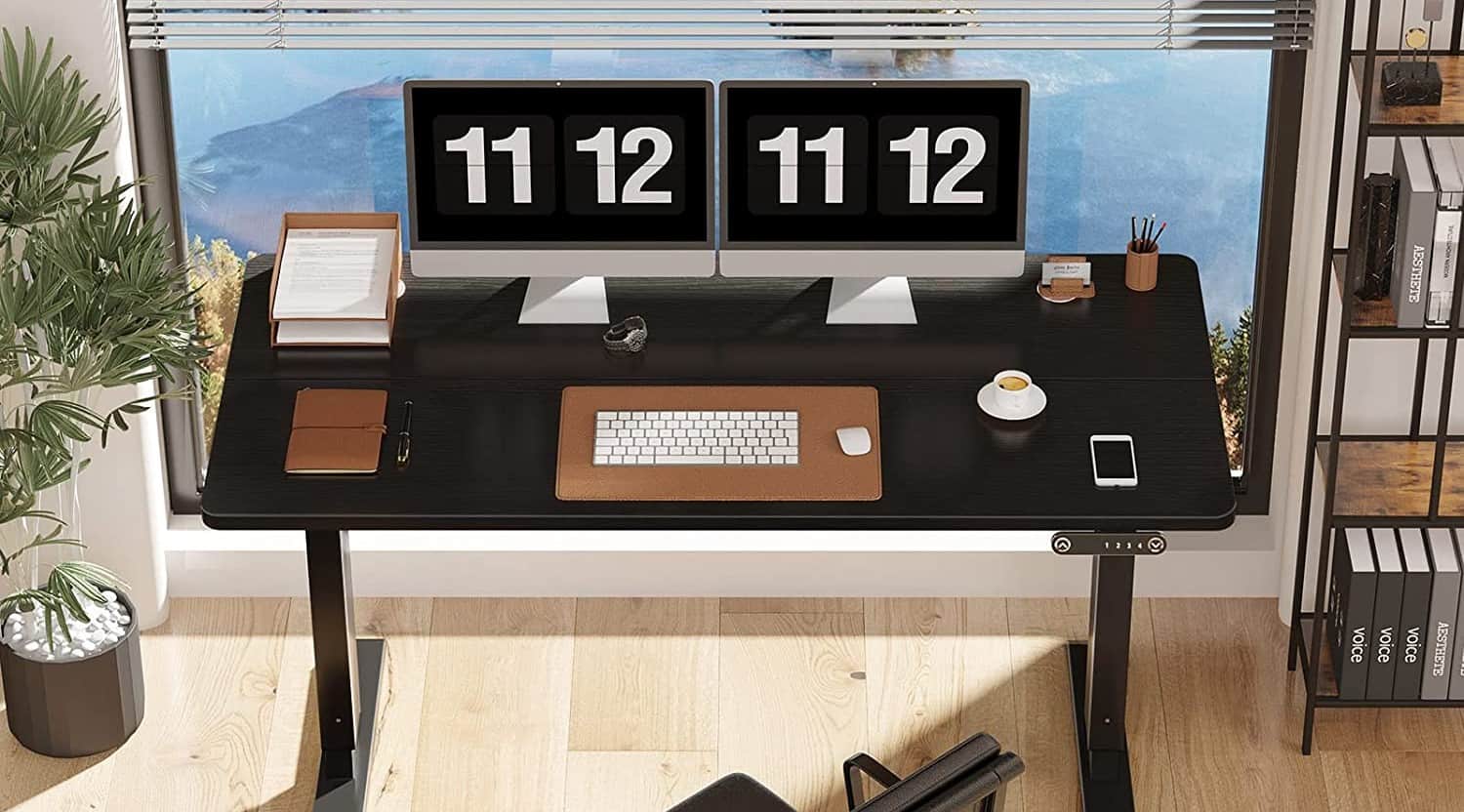
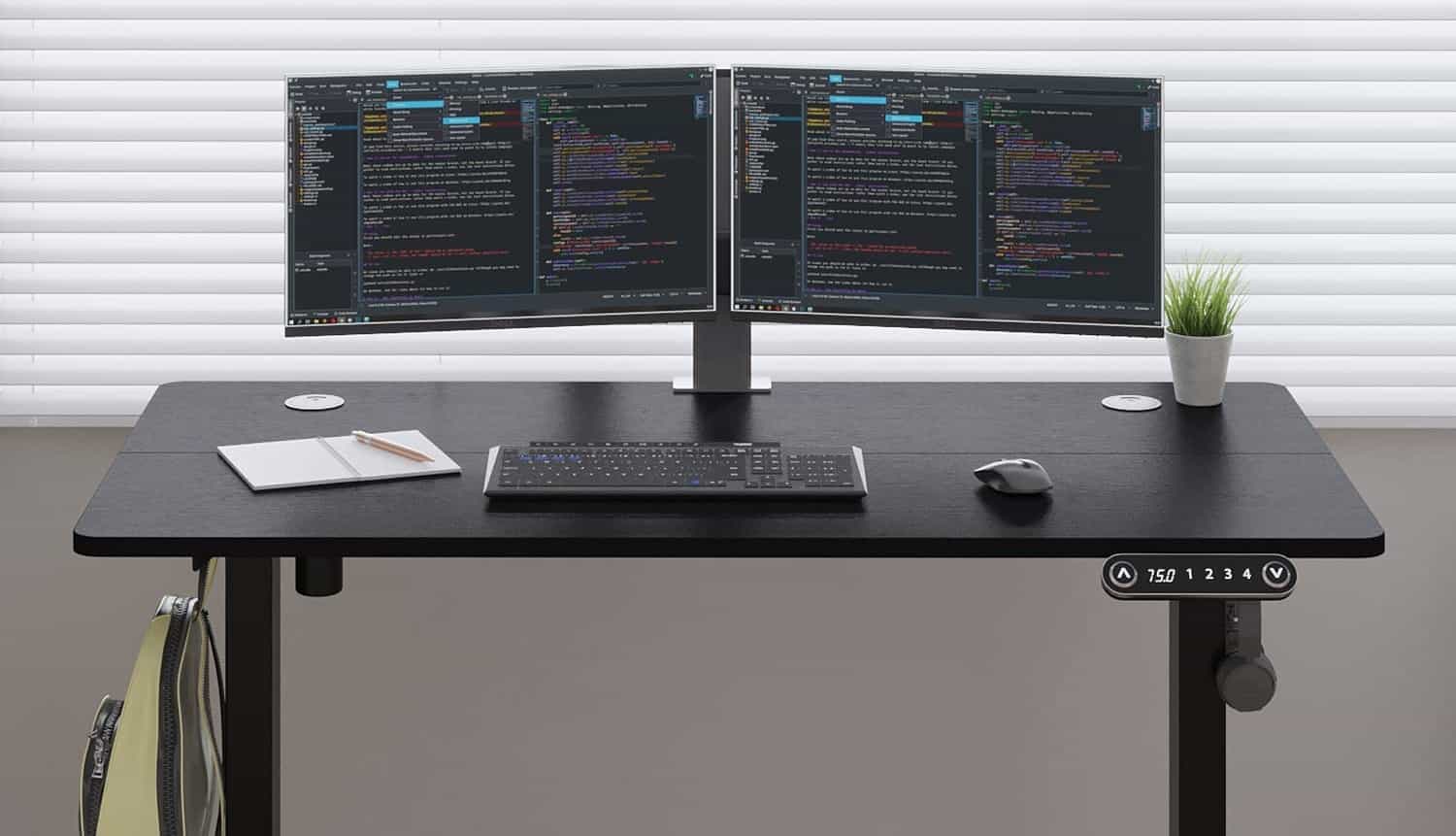
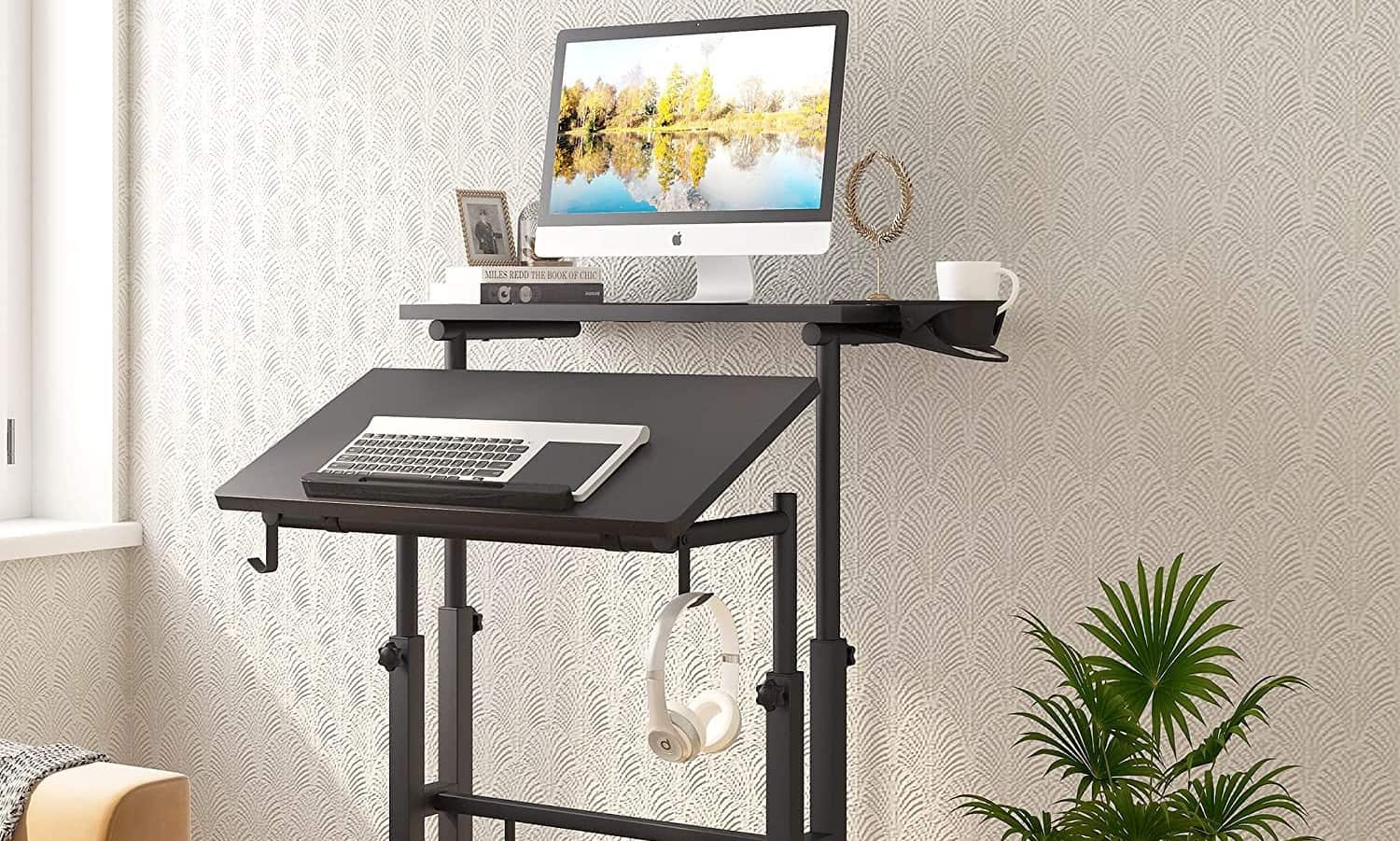
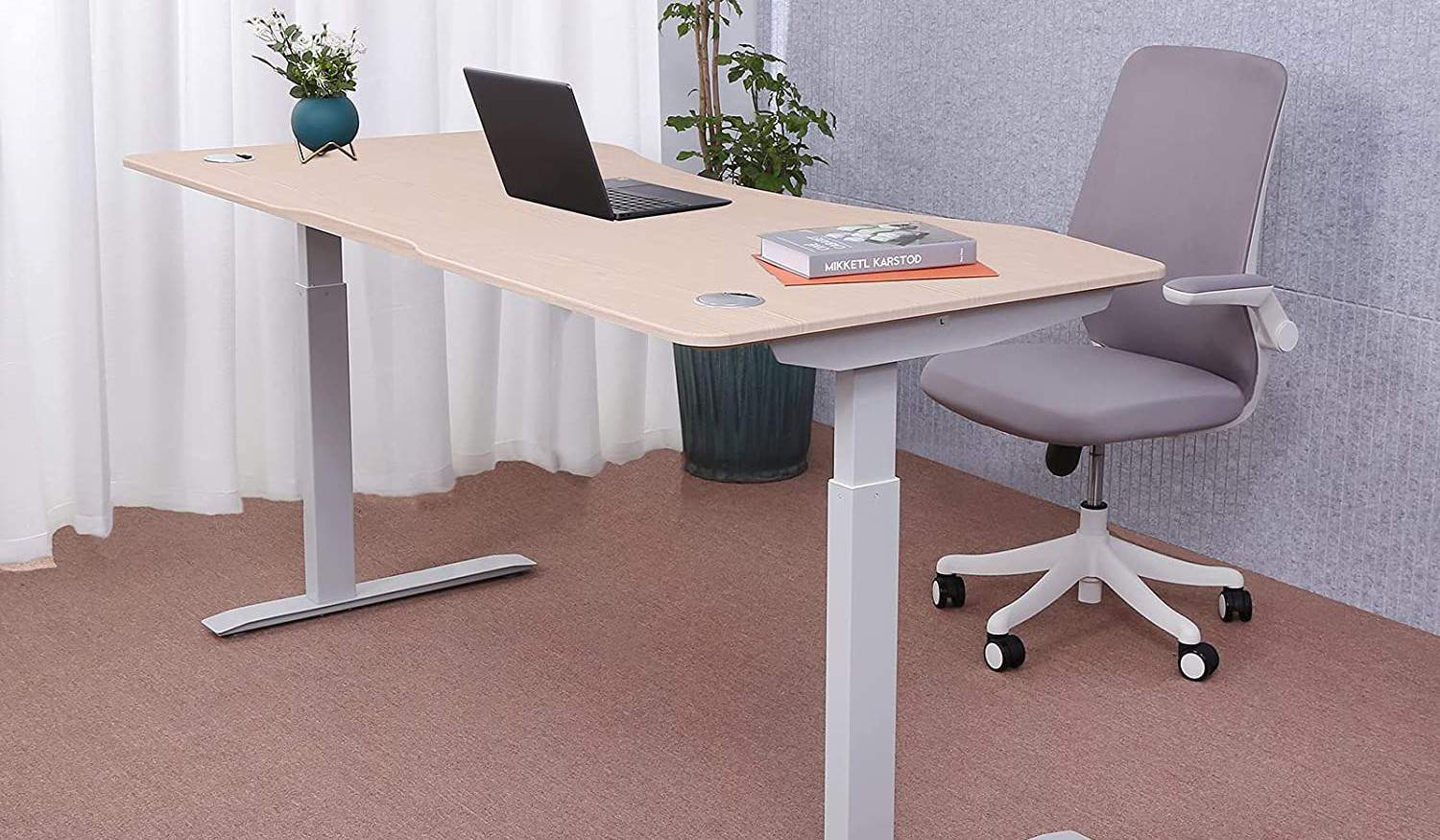
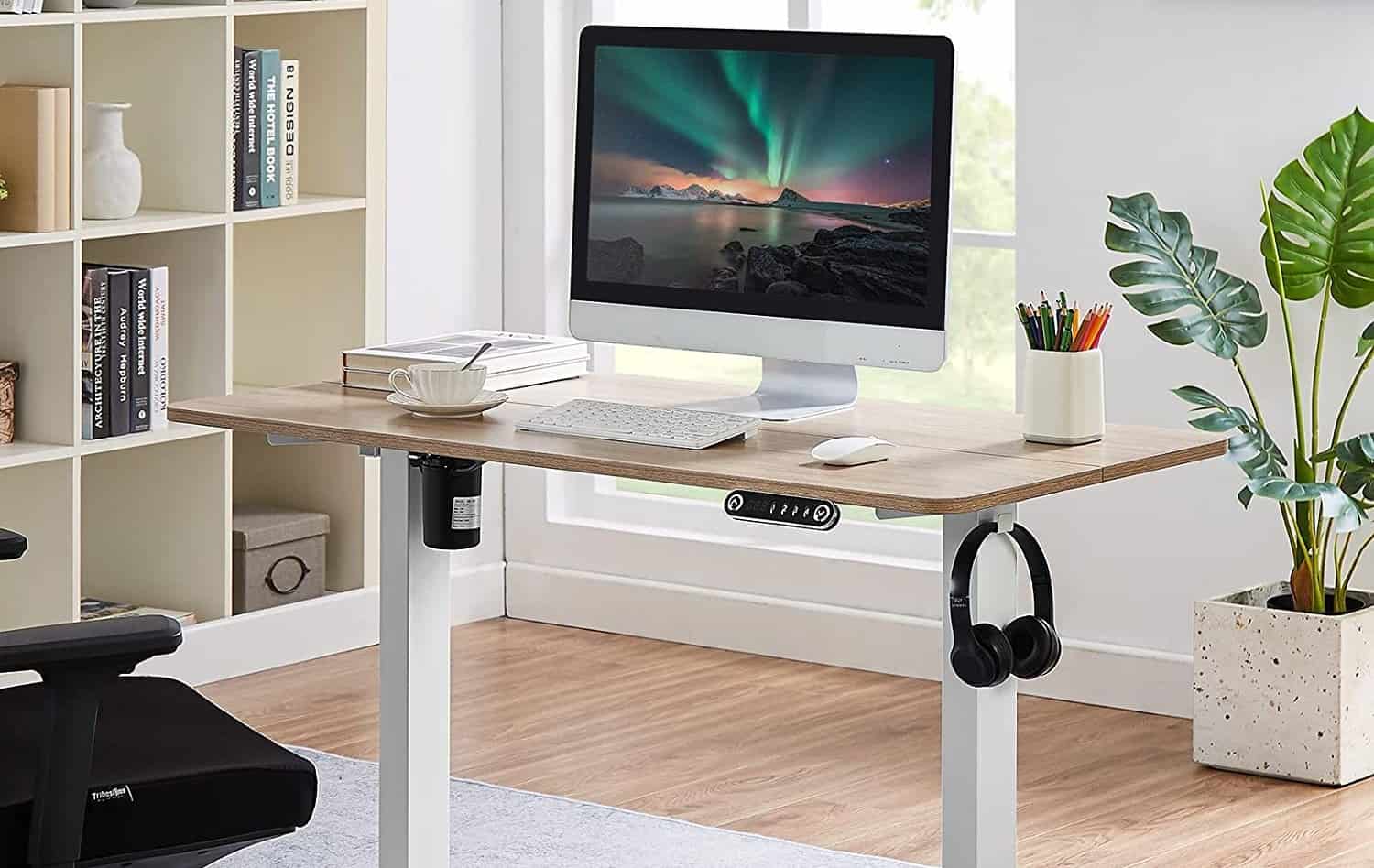
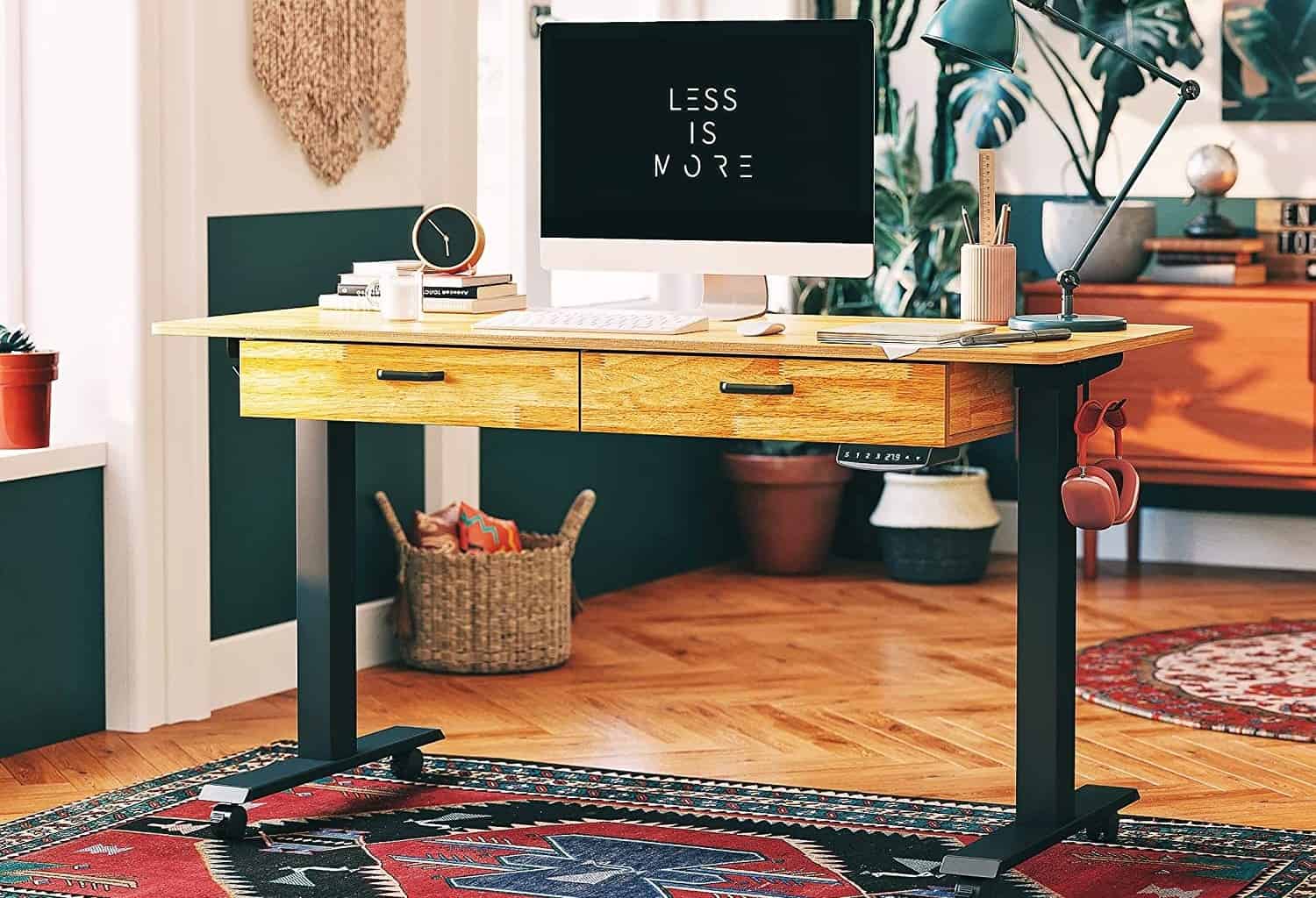
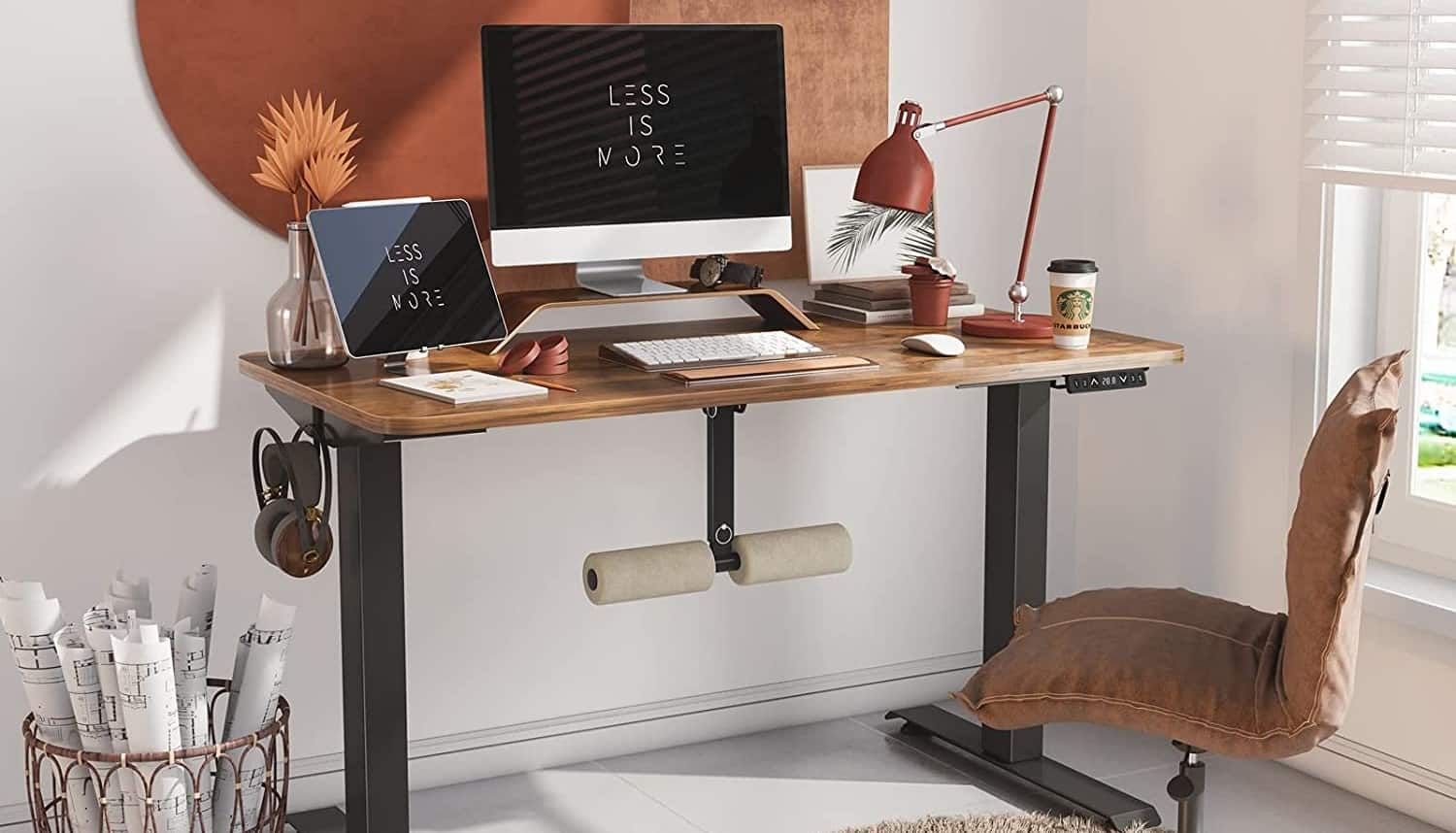
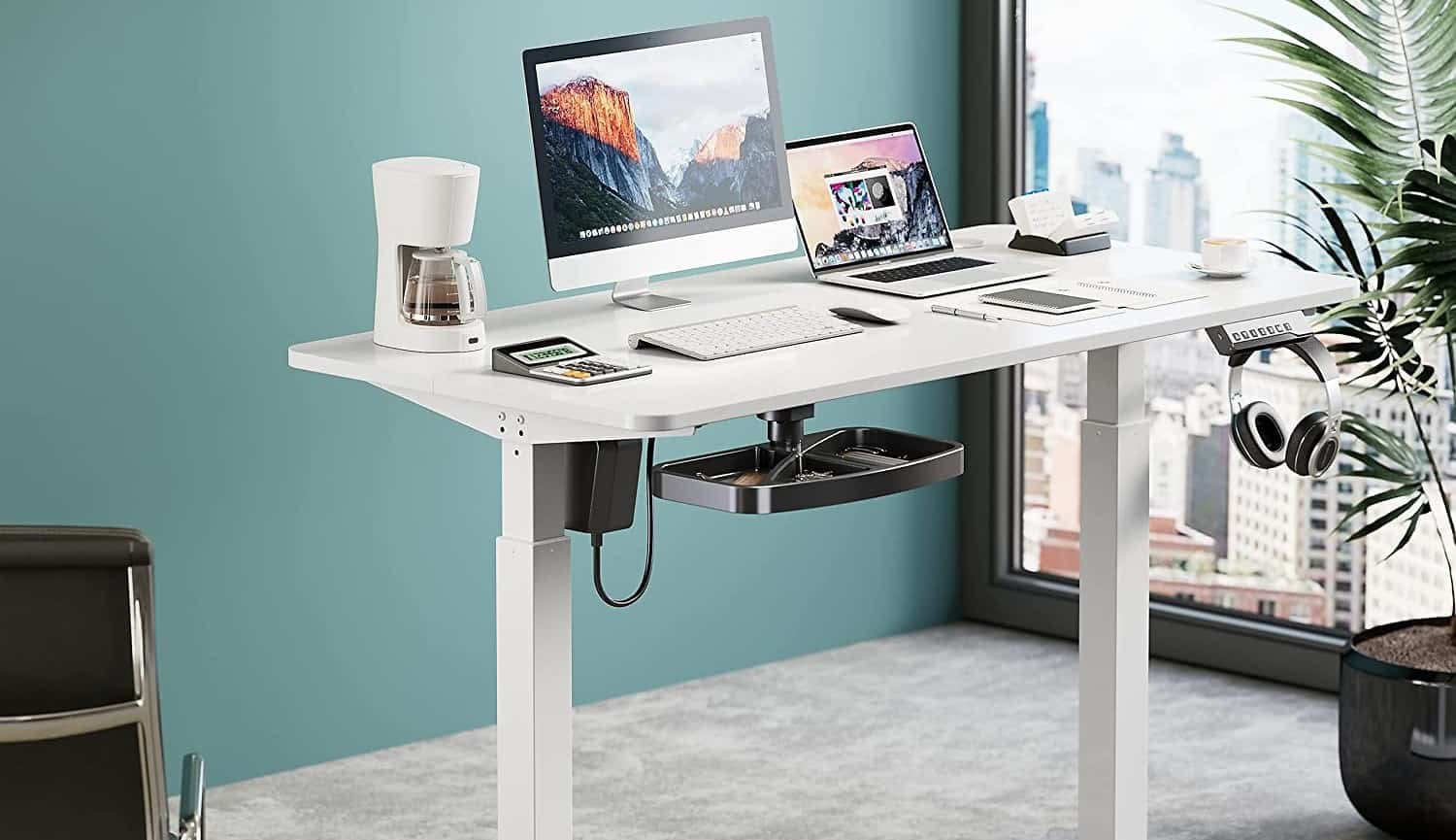
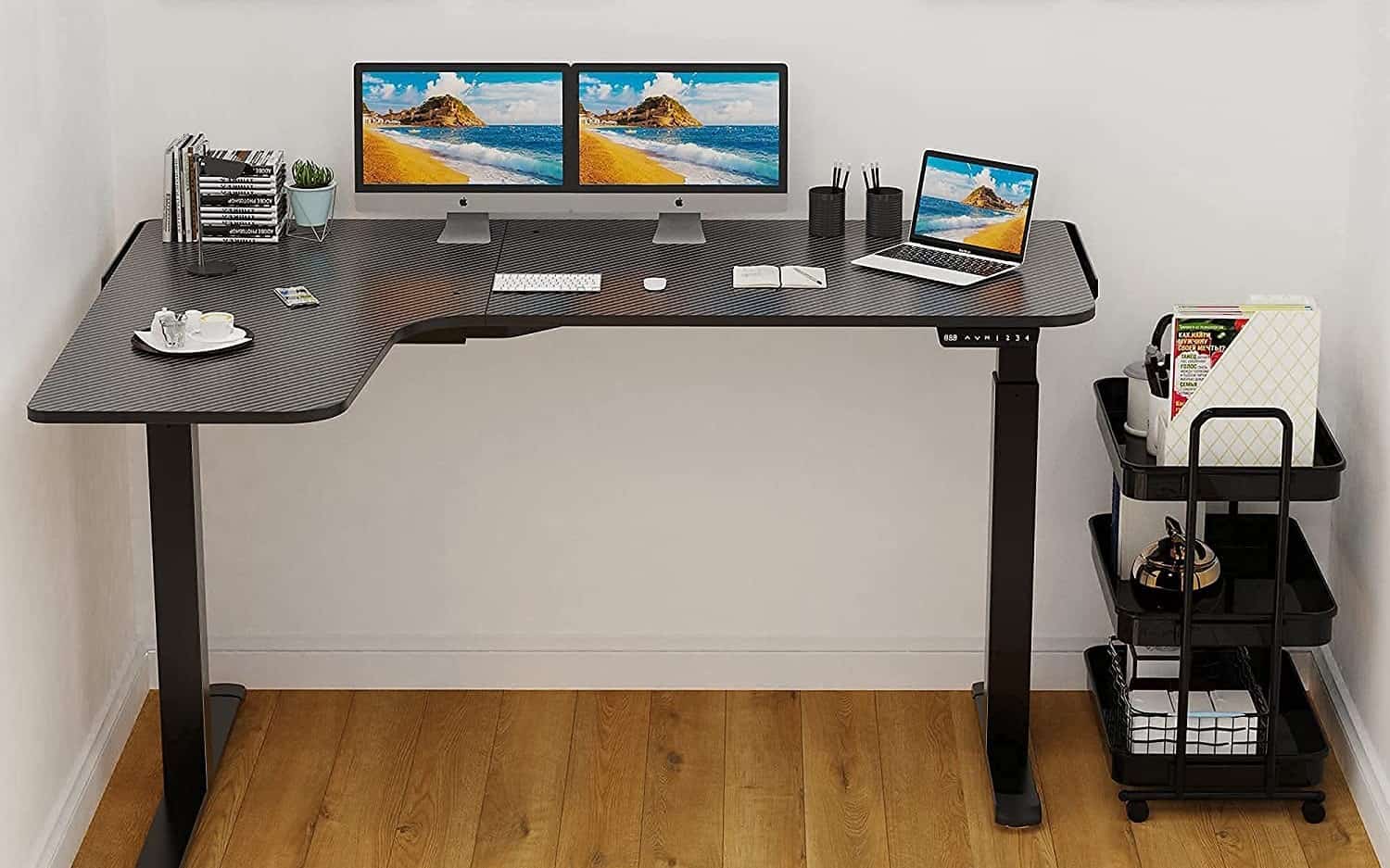
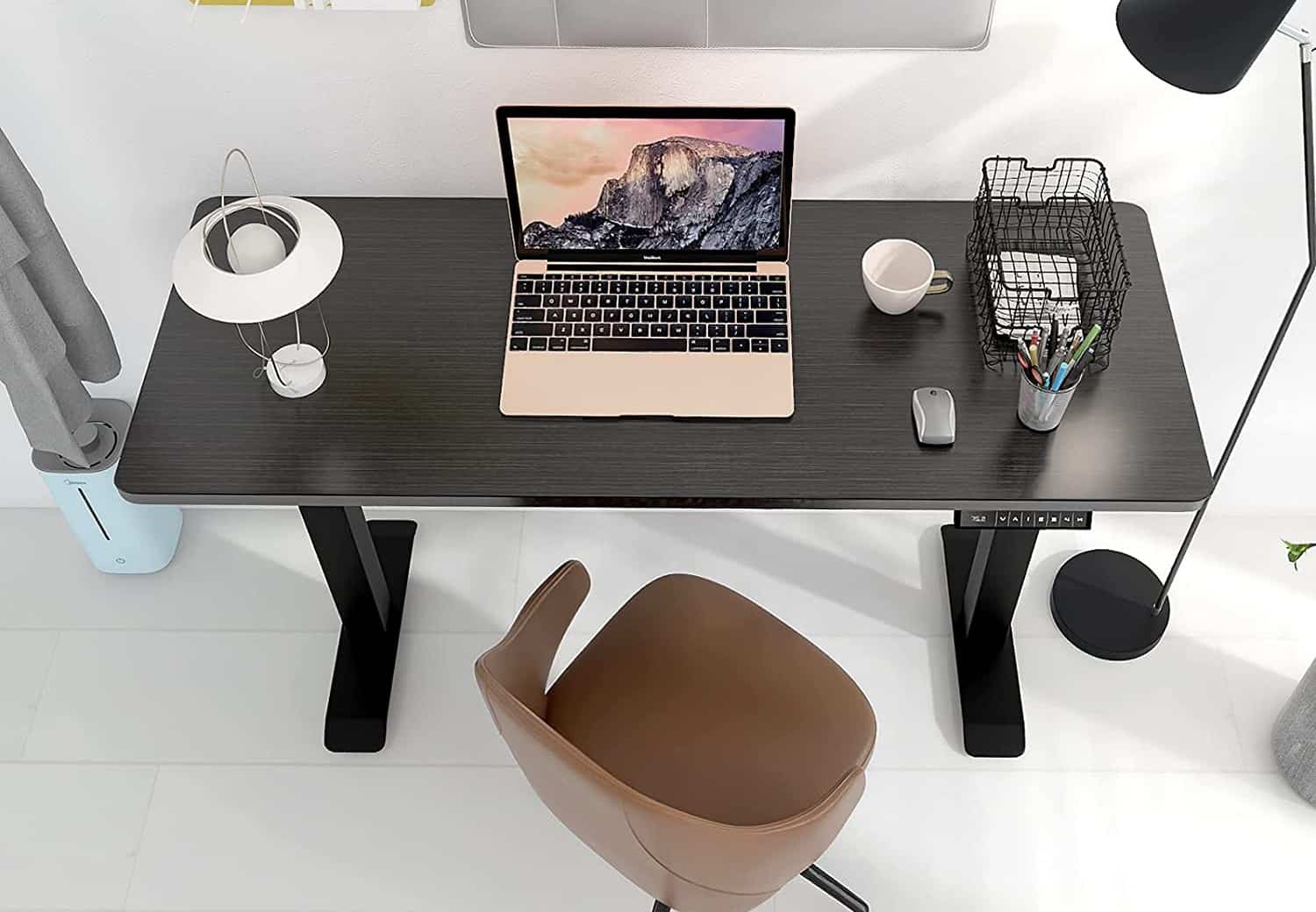
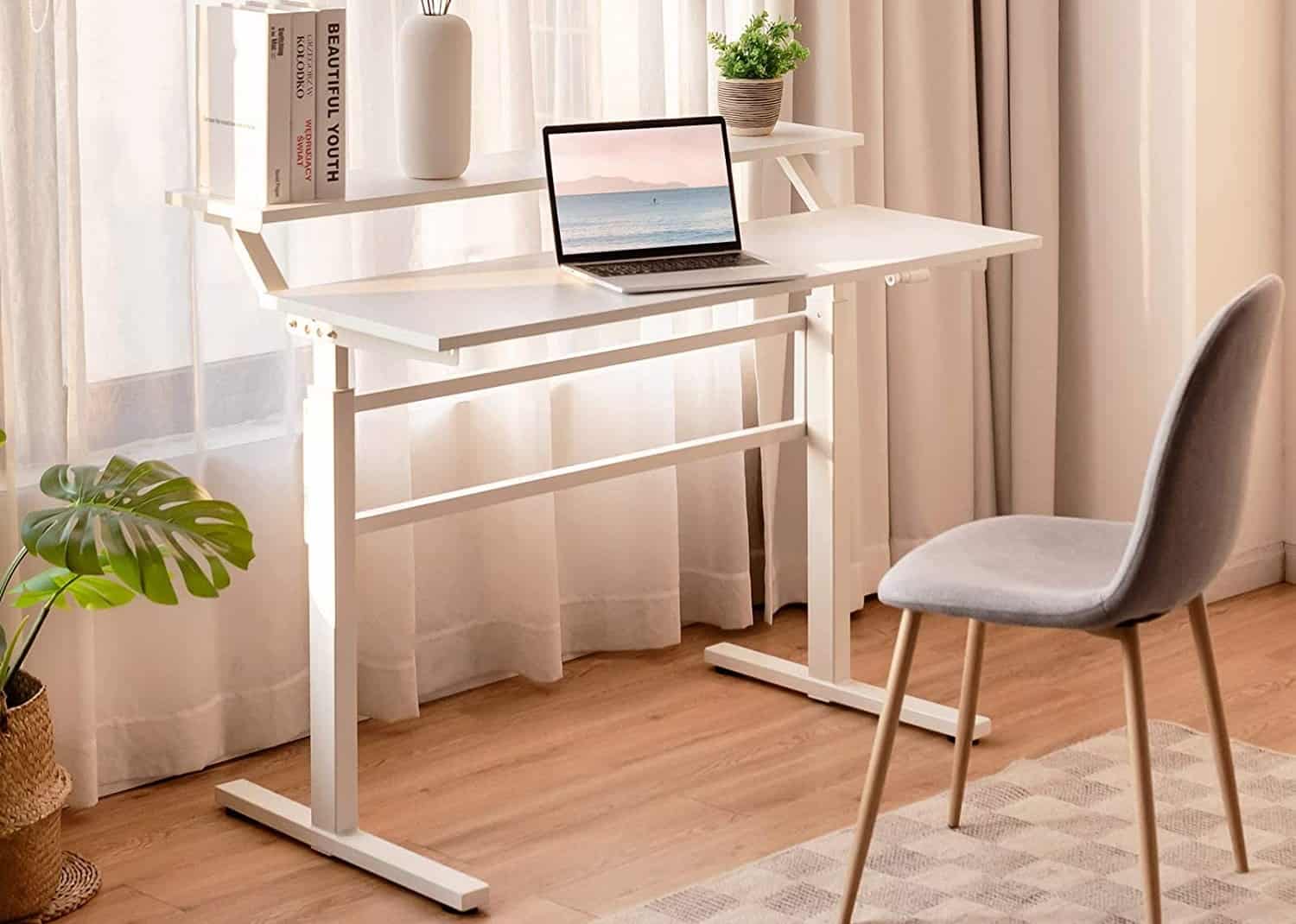
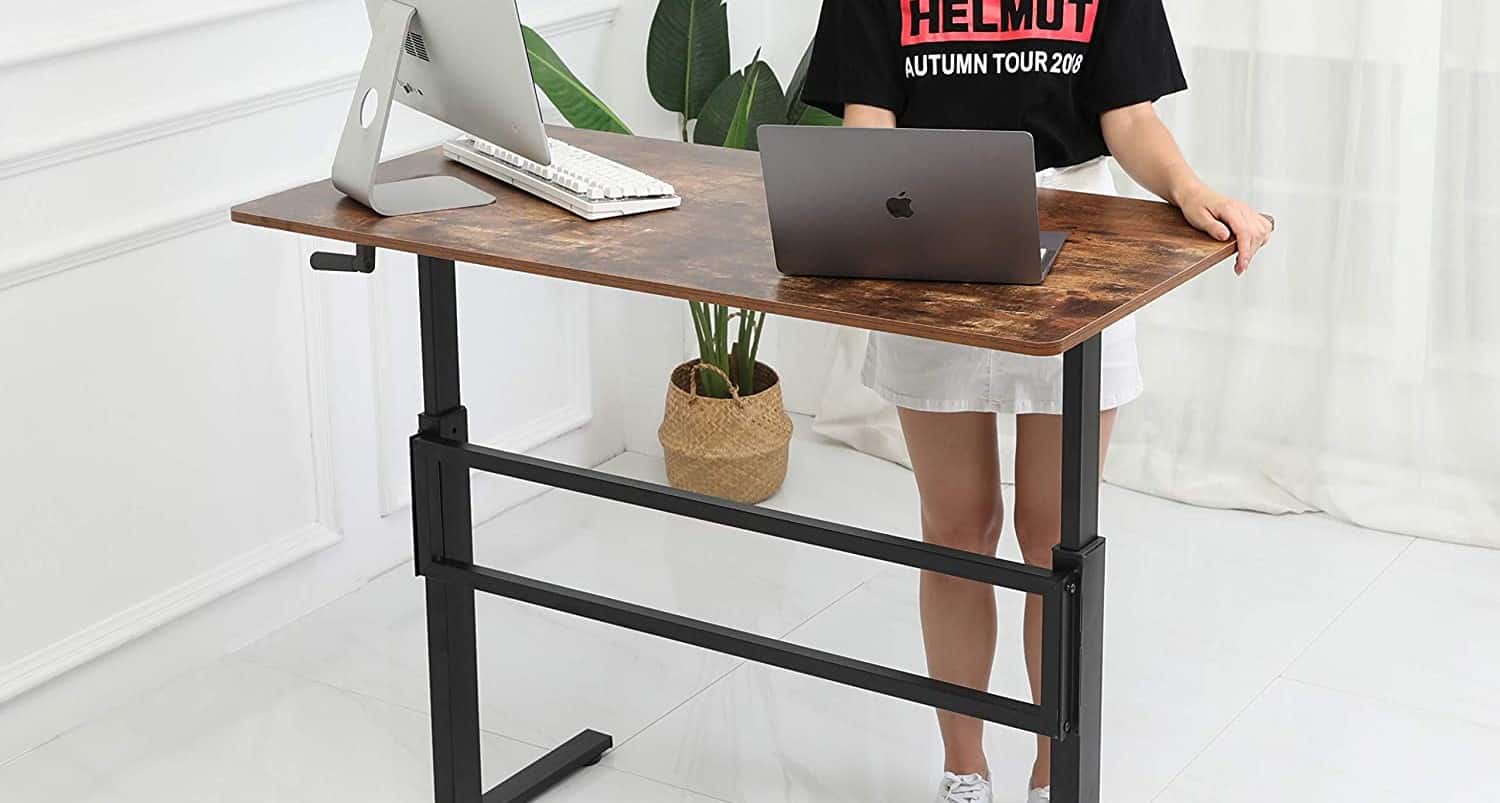
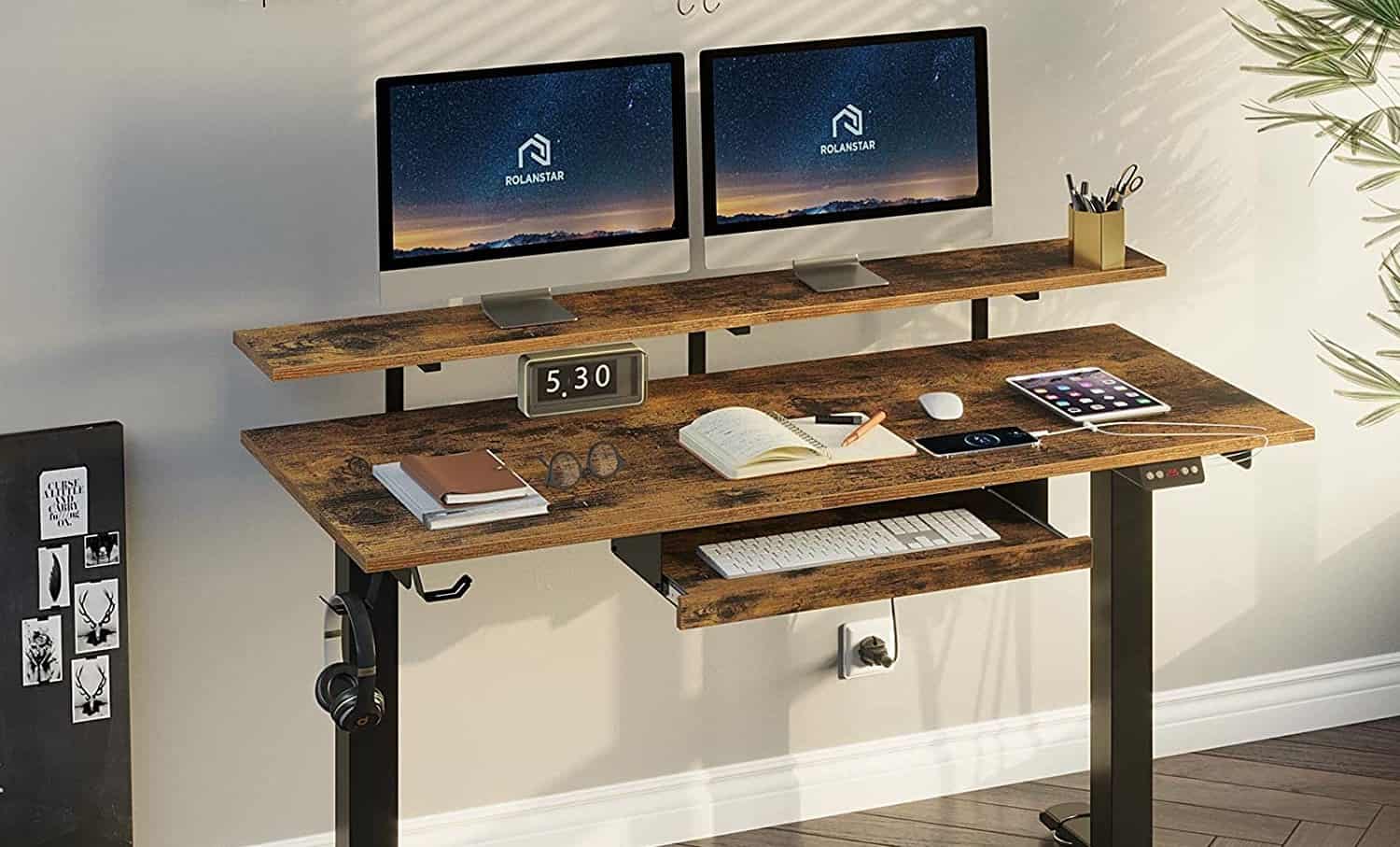
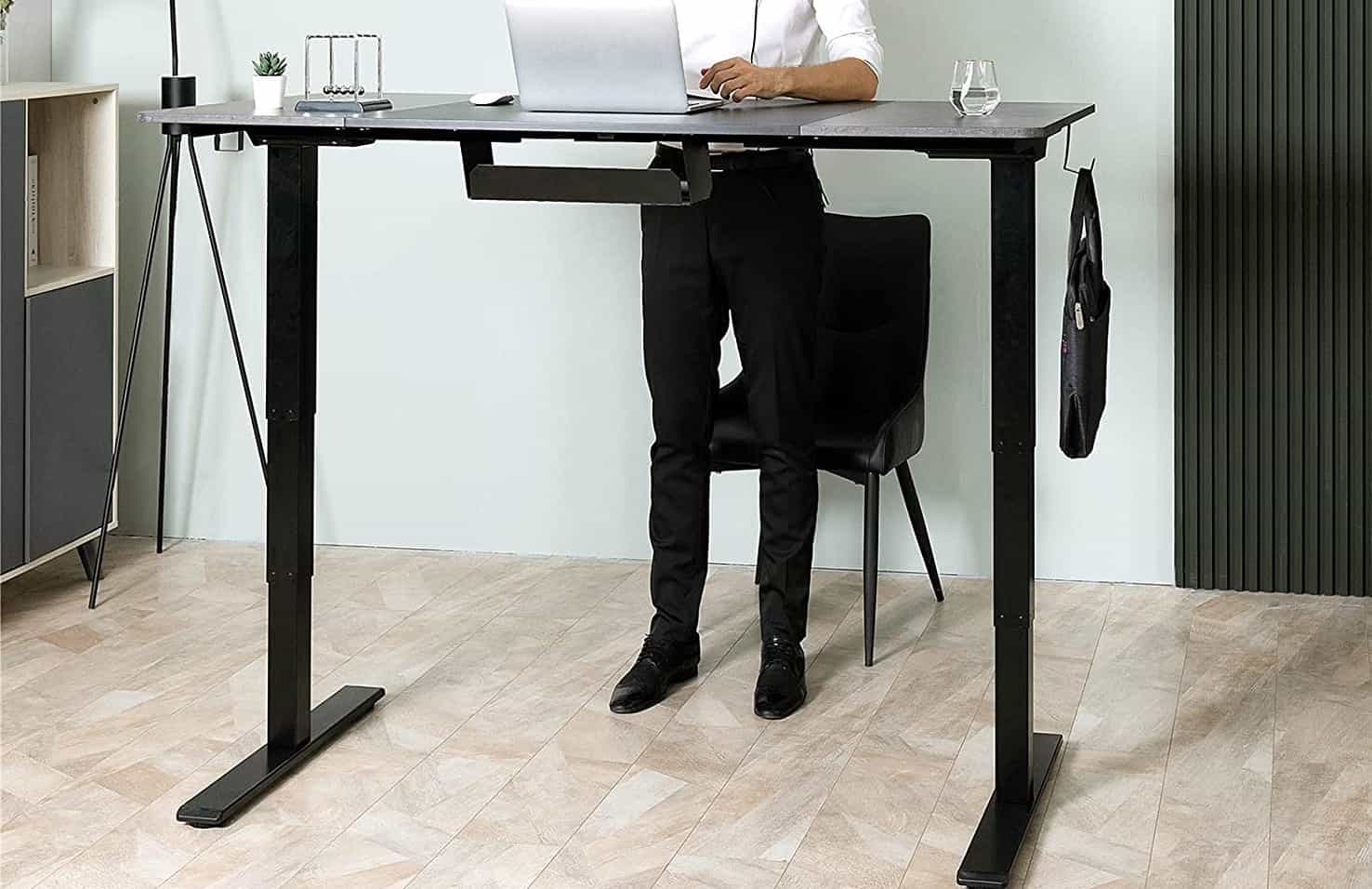
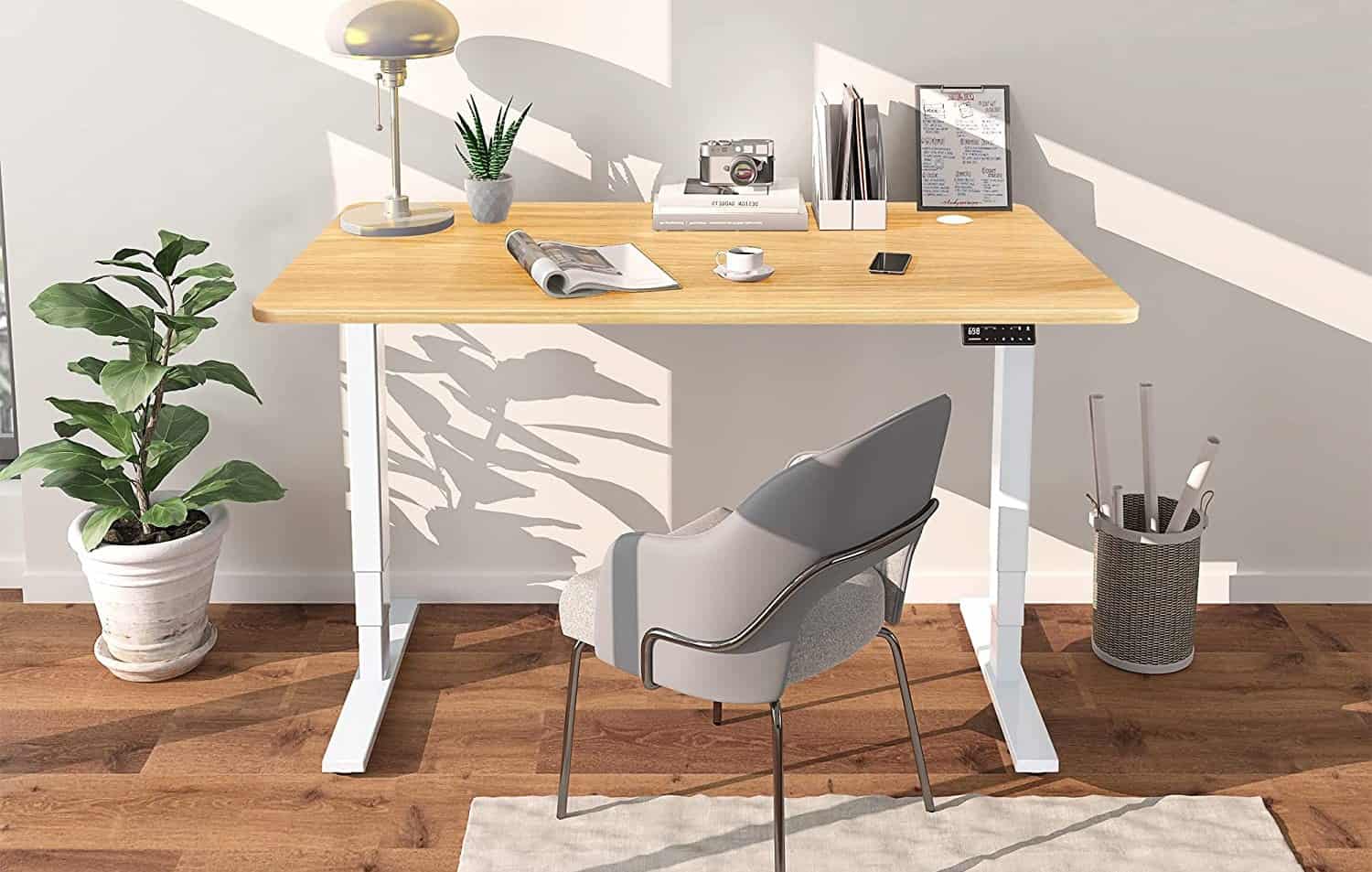
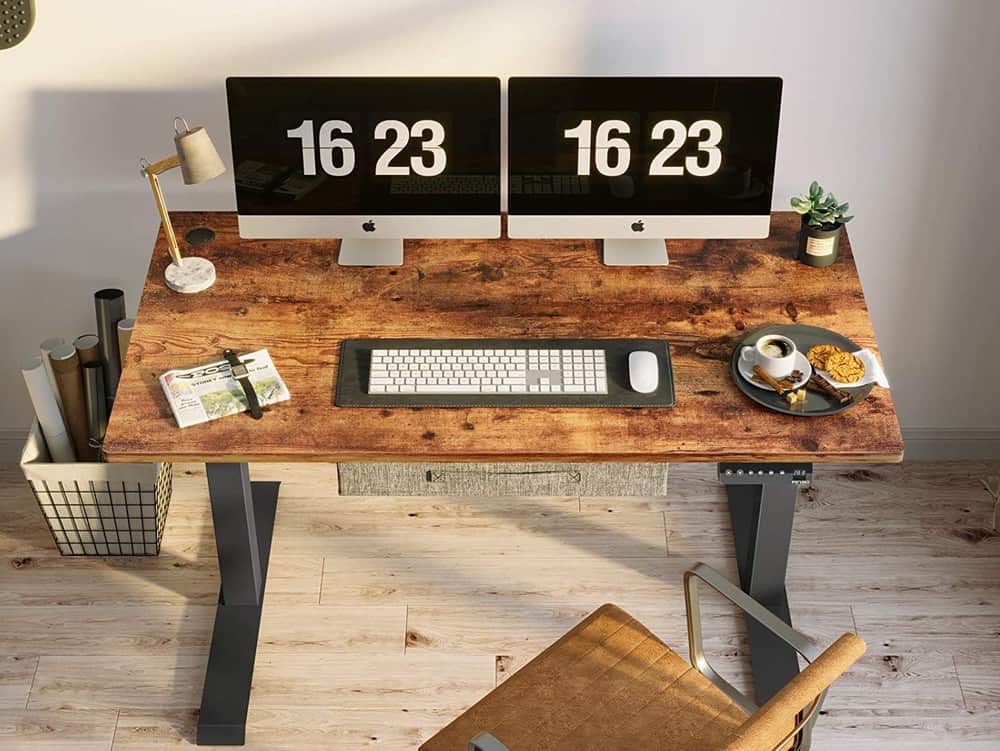
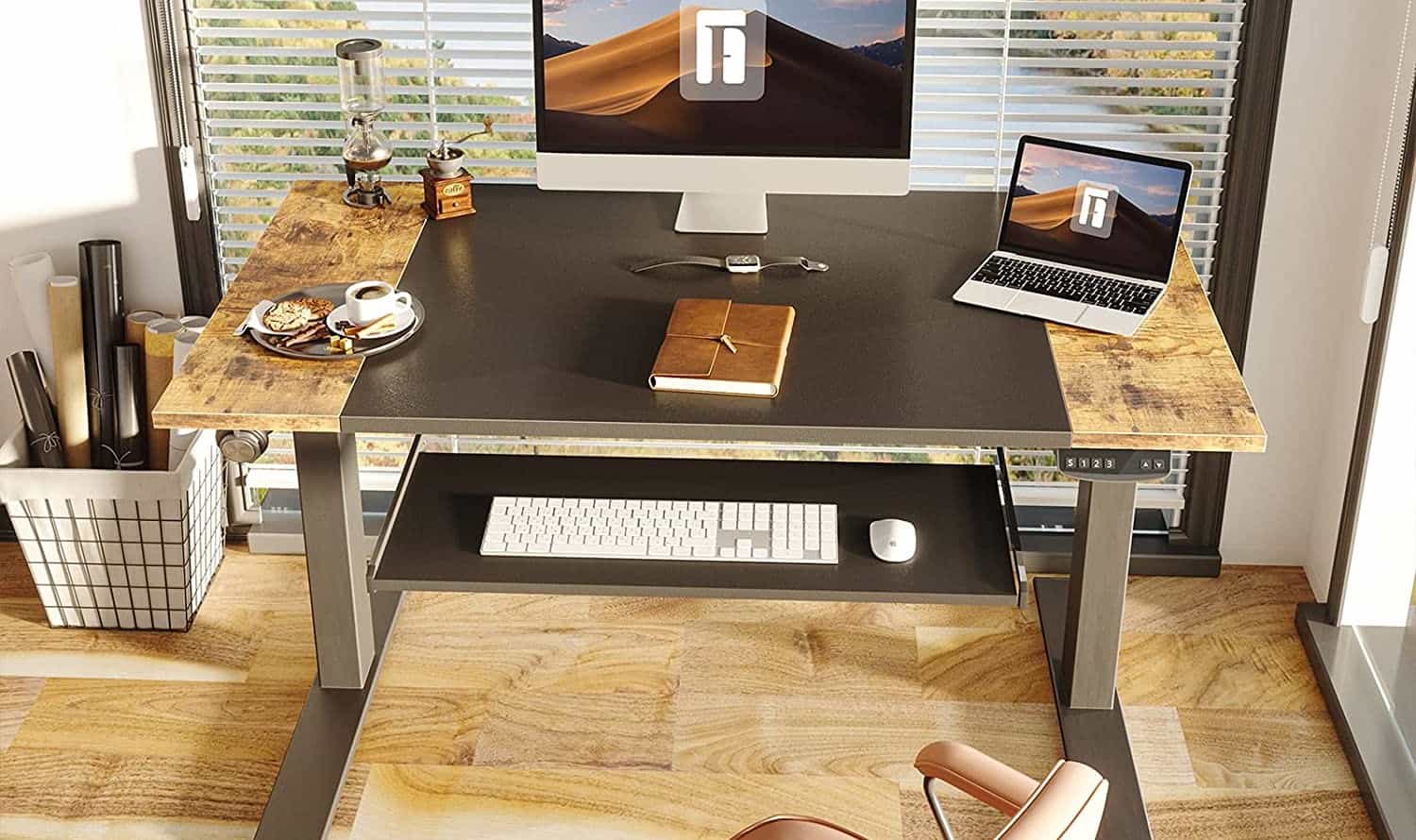
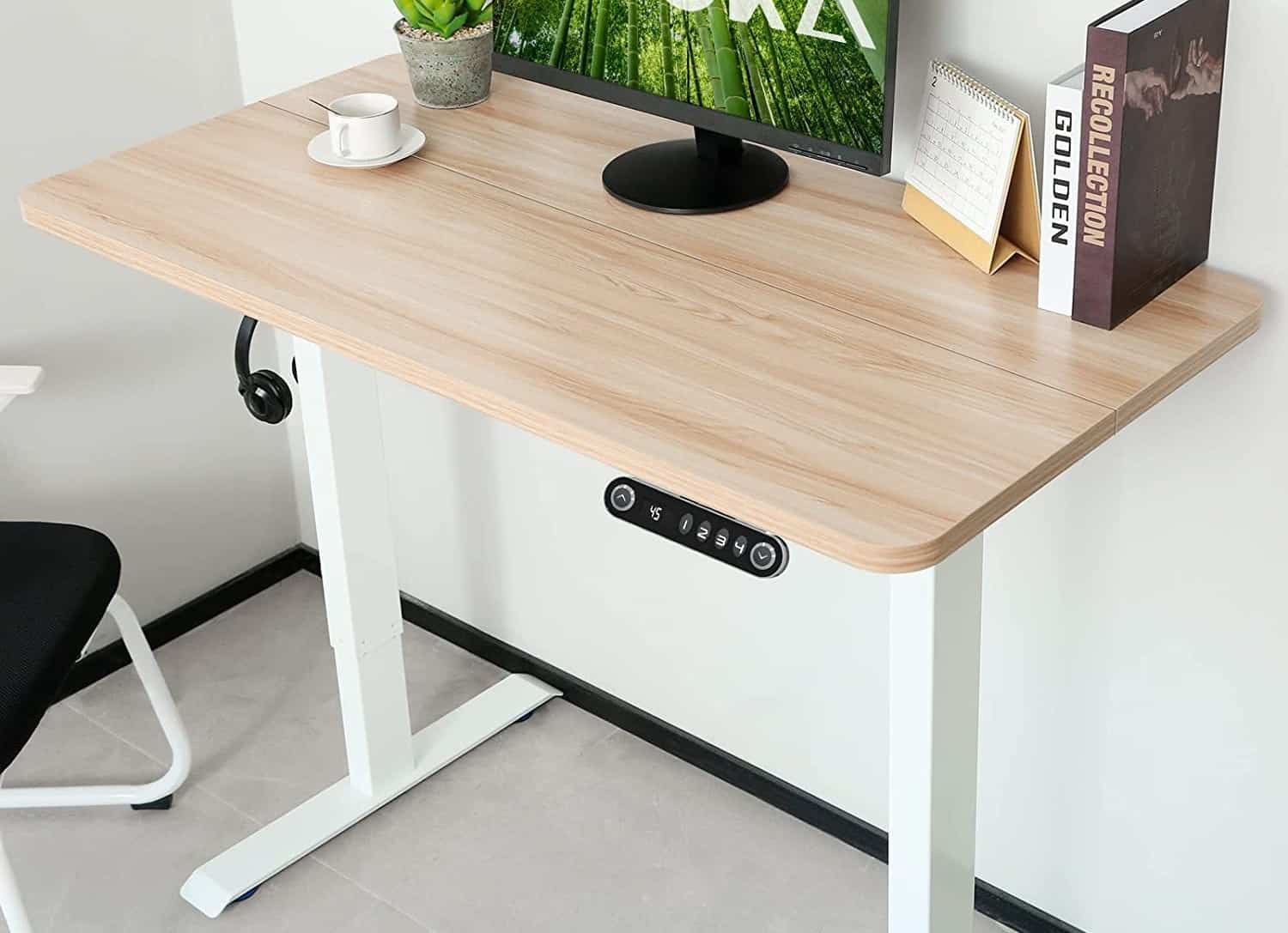
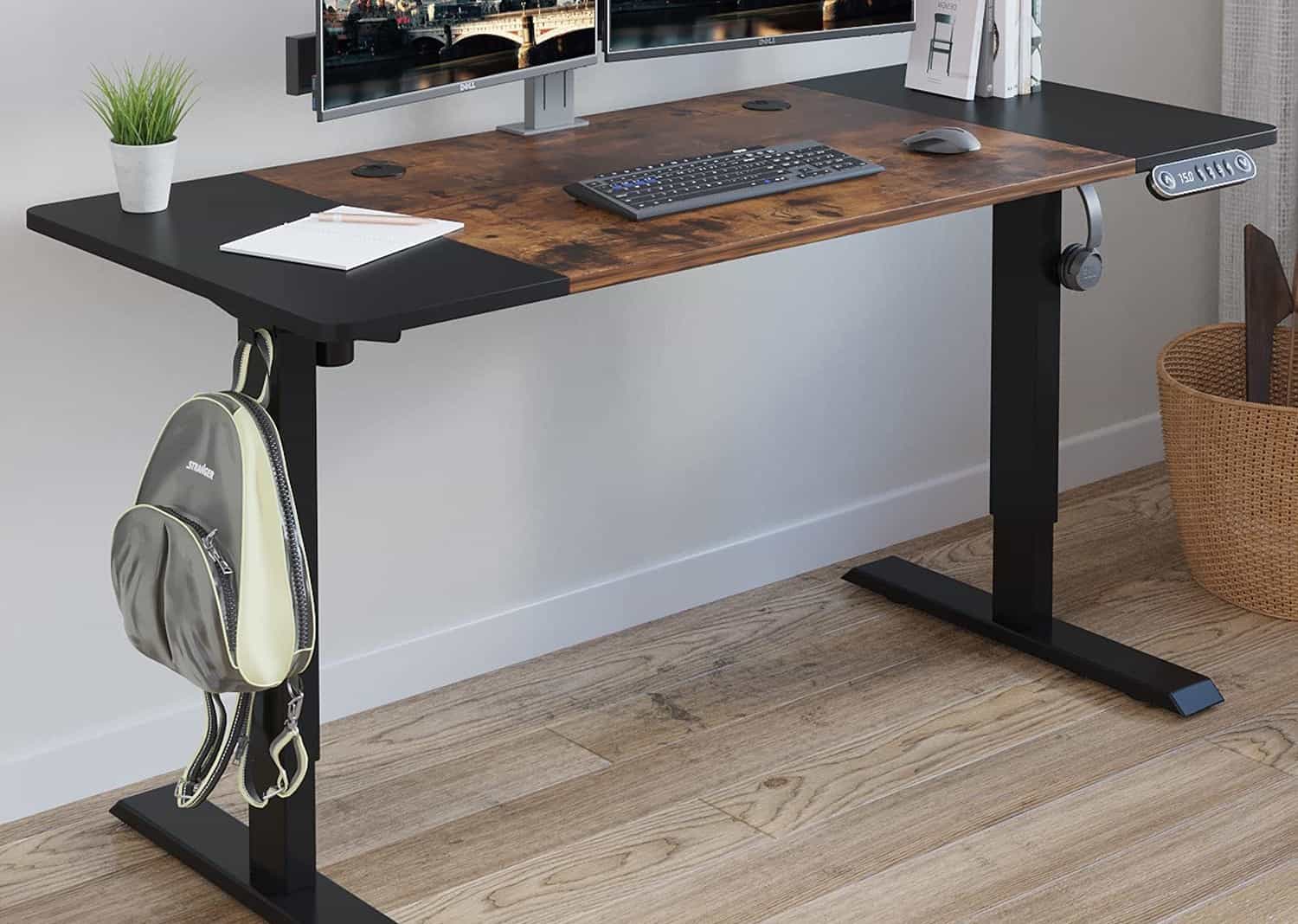
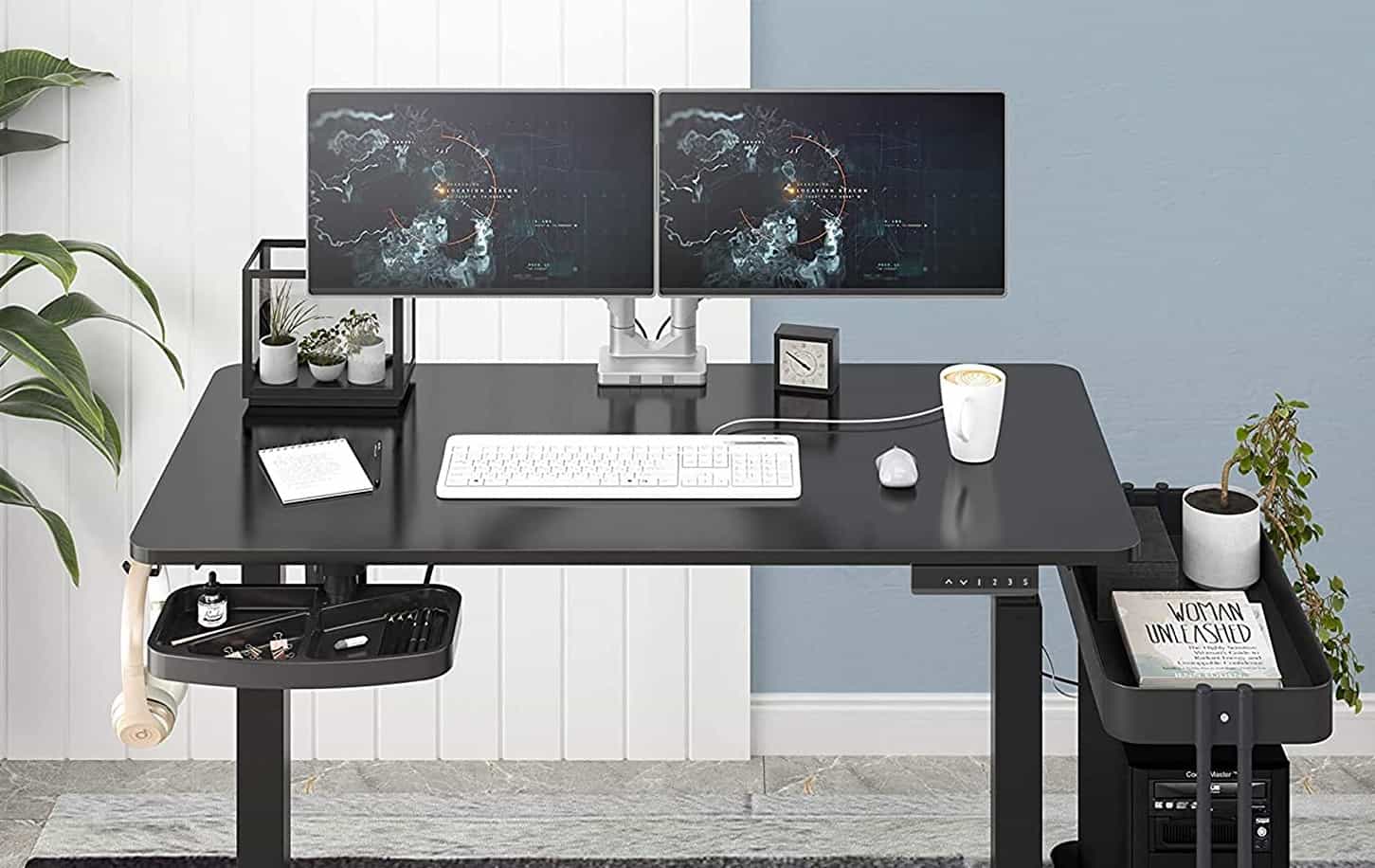
![Best Standing Desks for Gamers in [year] 27 Best Standing Desks for Gamers in 2026](https://www.gadgetreview.dev/wp-content/uploads/best-standing-desks-for-gamers-image.jpg)
![Best Uplift Standing Desks in [year] 28 Best Uplift Standing Desks in 2026](https://www.gadgetreview.dev/wp-content/uploads/best-uplift-standing-desks-image.jpg)
![Best Autonomous Standing Desks in [year] 29 Best Autonomous Standing Desks in 2026](https://www.gadgetreview.dev/wp-content/uploads/best-autonomous-standing-desks-image.jpg)
![Best Jarvis Standing Desks in [year] 30 Best Jarvis Standing Desks in 2026](https://www.gadgetreview.dev/wp-content/uploads/best-jarvis-standing-desks-image.jpg)
![Best Ergotron Standing Desks in [year] 31 Best Ergotron Standing Desks in 2026](https://www.gadgetreview.dev/wp-content/uploads/best-ergotron-standing-desks-image.jpg)
![Best Standing Desk Bikes in [year] 32 Best Standing Desk Bikes in 2026](https://www.gadgetreview.dev/wp-content/uploads/best-standing-desk-bikes-image.jpg)
![Best VariDesk Standing Desks in [year] 33 Best VariDesk Standing Desks in 2026](https://www.gadgetreview.dev/wp-content/uploads/best-varidesk-standing-desks-image.jpg)
![Best Flexispot Standing Desks in [year] 34 Best Flexispot Standing Desks in 2026](https://www.gadgetreview.dev/wp-content/uploads/best-flexispot-standing-desks-image.jpg)
![Best Vivo Standing Desks in [year] 35 Best Vivo Standing Desks in 2026](https://www.gadgetreview.dev/wp-content/uploads/best-vivo-standing-desks-imsge.jpg)
![Best Walking Treadmill Standing Desks in [year] 36 Best Walking Treadmill Standing Desks in 2026](https://www.gadgetreview.dev/wp-content/uploads/best-walking-treadmill-standing-desks-image.jpg)
![Best Fezibo Standing Desks in [year] 37 Best Fezibo Standing Desks in 2026](https://www.gadgetreview.dev/wp-content/uploads/best-fezibo-standing-desks-image.jpg)
![Best Standing Desk in [year] ([month] Reviews) 38 Best Standing Desk in 2026 (January Reviews)](https://www.gadgetreview.dev/wp-content/uploads/best-standing-desks-image-scaled.jpg)
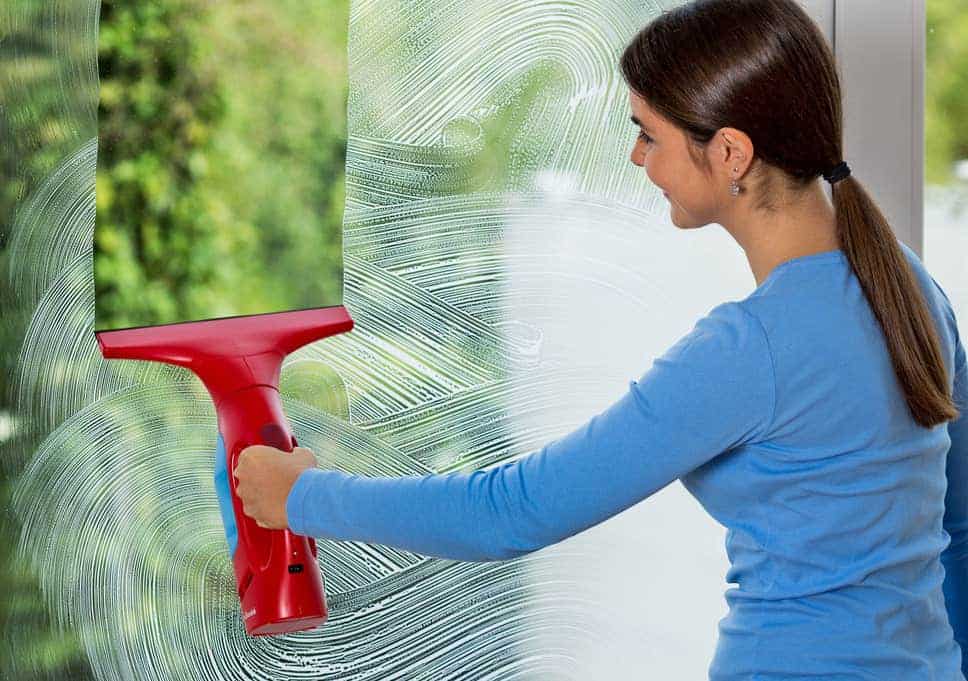
![4 Best Robotic Window Cleaners in [year] 40 4 Best Robotic Window Cleaners in 2026](https://www.gadgetreview.dev/wp-content/uploads/best-robotic-window-cleaners.jpg)
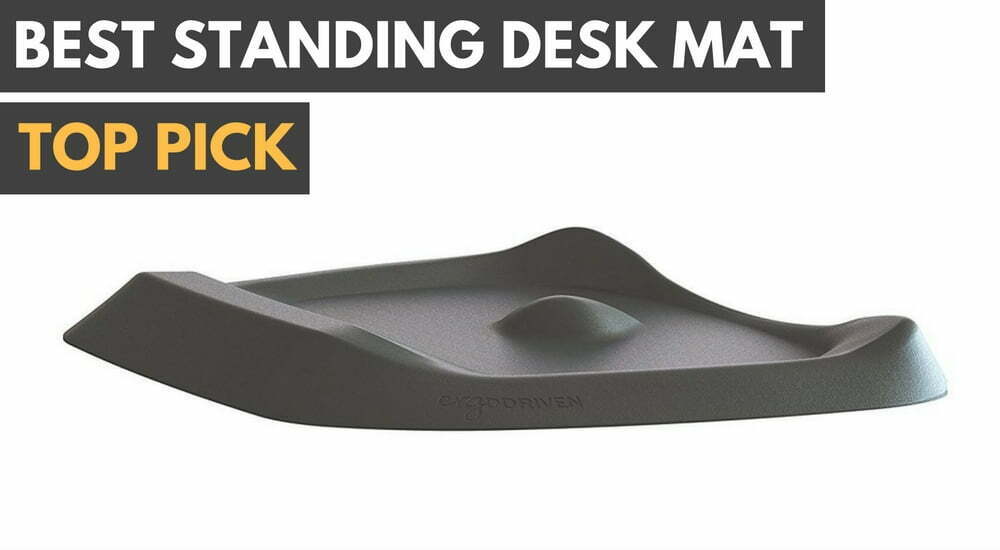
![7 Best Stainless Steel Cleaners in [year] 42 7 Best Stainless Steel Cleaners in 2026](https://www.gadgetreview.dev/wp-content/uploads/best-stainless-steel-cleaner.png)
![7 Best Portable Closets in [year] 43 7 Best Portable Closets in 2026](https://www.gadgetreview.dev/wp-content/uploads/best-portable-closet.jpg)

![7 Best Shipping and Postal Scales in [year] 45 7 Best Shipping and Postal Scales in 2026](https://www.gadgetreview.dev/wp-content/uploads/best-shipping-and-postal-scale.jpg)
![7 Best Clipboard for Work in [year] 46 7 Best Clipboard for Work in 2026](https://www.gadgetreview.dev/wp-content/uploads/best-clipboard-for-work.jpg)
